I’m making one of my frequent diversions from colour (yes, this is my orange/apricot/peach month according to my 2016 resolution, and it’s coming up soon!) to create a photographic travel journal for a trip we made last month. Why? Because that’s how I derive added value from a journey long after it’s over. Life has become so full, it’s sometimes tempting to unpack the suitcase and unpack the memories from our brain. A journal lets me store those memories
Prior to travelling to Sun Valley, Idaho to hang out with a group of old friends, we did what some 305 million people do in the United States each year: we visited a national park. Actually TWO national parks! We were very lucky to find a tour company with cancellations, because staying overnight in either Teton or Yellowstone National Park is not a last-minute decision, given the fact that the park hotels (all owned by the National Park System) are fully booked a year in advance. But by going on a wait-list at Tauck Tours, then lucking out on cancellations, we scored our opportunity to visit these two iconic western parks in September, arguably the most beautiful sightseeing month of the year there (still crowded, but not summer-busy). And 2016 just happens to be the 100th anniversary year of the U.S. National Parks system!
Thus our excitement as we arrived at Jackson Hole Airport in the far west of Wyoming on Labour Day Monday. Fortunately, we’d read the weather forecast and left our summer clothes behind in the east, unlike some people arriving that day to bracing mountain temperatures.
There are pros and cons to doing a bus tour, as those of us who enjoy our freedom on the road know very well. We might have tried to drive the parks ourselves on our own schedule had we thought about going earlier, but the main advantage, as I noted above, is that the lodging bookings have already been made. And a respected tour company like Tauck has excellent guides, so we learned so much more with our guide Murray Rose than we would have on our own. And if you’ve juggled flights, border hassles, baggage, rental car logistics and maps, you’ll know how satisfying it was for us to see that man with the sign who grabbed our suitcases and led us out to the comfy SUV in front of the small terminal. His name was Kirby, and like most of the people employed in Jackson Hole (the name of the valley in which the town of Jackson is located), he lives a long (50 mile) commute away, the issue being a shortage of affordable housing for workers in this winter playground of the very rich. We set out on Highway 191 for the 45-minute drive to Jackson Lake Lodge in Grand Teton National Park.
Though its summit was shrouded in clouds, Kirby pointed out the permanent (but melting fast) glacier on Grand Teton. (I’ll talk about the mountain range later in this blog – when the weather clears!)
By the time we headed through the Moran Entrance Station into Grand Teton National Park, we’d already seen our first herd of bison in the distance.
Now we were driving the John D. Rockefeller Jr. Parkway. A few miles in, we got a good look at the Oxbow bend of the Snake River on its meandering journey from its headwaters just beyond Jackson Lake in Yellowstone Park. At 1,078 miles (1,735 k) long, the Snake is the 13th largest river in the United States and the largest tributary of the Columbia River, which in turn is the largest North American river and empties in the Pacific Ocean. Tomorrow (further down this page), we will raft 10 miles of its winding 50 mile (80 k) course through Jackson Hole.
We arrived at the Jackson Lake Lodge, checked in, dumped our suitcases in the corner of our little cottage and crawled into bed. These days, a 6 am flight to Chicago means a 3 a.m. alarm clock call. Time for a nap! A few hours later, much refreshed, we explored the lobby of the lodge…..
….before sitting down in the bar overlooking the Grand Tetons. We ordered their special cocktail – a drink with a 2-word name, neither of which should be in the same phrase with each other. Huckleberry. Margarita. Don’t. Ever. And I love margaritas, but sorry, huckleberries are for muffins or pancakes. (These were the sourest berries I’ve ever had.)
Sour cocktails aside, the view as twilight descended was truly spectacular, with a new moon rising above the Tetons.
The next morning, there was a frost on the lawn in front of the lodge…
…and frost on the silky lupine (Lupinus sericeus) leaves beside the hillside trail nearby.
But the Tetons were looking gorgeous as early mist floated above Jackson Lake.
The boggy area stretching from the lodge out to Jackson Lake is called Willow Flats. The sign says that “these grassy openings, small ponds and clumps of willows provide important food and cover for sandhill cranes, beaver, moose and many other wetland species.”
The air was still cold when we were picked up early for our morning raft trip down the Snake River. After a short drive from the lodge, we launched from Deadman’s Bar (so-called because of a notorious triple-murder at a campsite here back in the Gold Rush days). Our Grand Teton Lodge Company able raft guide was Spencer, and he showed us how to swivel our bodies into the raft from the shore without getting wet.
With five in the front of the raft and five in the back, we set out on our swift float down the Snake towards Moose Landing. This part of the river doesn’t have any technical whitewater, but is still considered advanced for amateurs. The previous summer, rangers posted a warning after several do-it-yourself boaters capsized. You need to know how to work those oars against the current, and our Spencer did!
The splendour of the Snake is that you are always within view of the Grand Tetons. In fact……
….this iconic vista of the Snake River was made by photographer Ansel Adams in 1942, when he worked for the U.S. Department of the Interior to photograph national parks for mural-sized prints for the Department’s new building (the Mural Project). Because the image is the property of the U.S. Government, it is considered public domain.
Lucky for us that the weather was clear and our view of the Tetons was magnificent.
Notwithstanding our raft’s speed and bouncing rhythm on the waves, I was able to zoom my little Canon telephoto lens to the summit of Grand Teton. At 13,775 feet, it’s the 78th highest mountain in North America, with Denali (Mount McKinley) the highest at 20,310 feet. It is the highest pinnacle in the Tetons, a fault block range which is the youngest chain of the Rocky Mountain ranges, having been formed quite suddenly less than 10 million years ago by an uplift along a fault that is still visible in places at the base of the range (more on that later). It continues to move, averaging 1 foot of displacement every 300-400 years. For climbers, Grand Teton is considered challenging; climbing diagrams show it criss-crossed with routes named for those who climbed it, including the first documented ascent by surveyor William Owen and Episcopal bishop Franklin Spalding with two others in 1898.
With eyes back on the river, we saw a bald eagle sitting in a tree.
A little further, (with the help of a comment from Spencer), I managed to snap a photo of a very strange scene: two turkey vultures perched on rocks near the carcass of an elk or deer that had drowned, its body upside down and its leg sticking out of the dead tree.
Just beyond, a fishing party worked the shallows, hoping perhaps to catch (and release) the iconic Snake River fine-spotted cutthroat trout, or at least a non-native rainbow trout that they can keep.
The upper Snake River features braided channels, sandbars and shifting logjams. As a gardener, I looked longingly at all the smooth river rocks on shore.
And we posed for the travel journal photo album.
Spencer must have wondered why I was focusing on his face so much, but it’s always a fun challenge for me to capture a good scene in someone’s sunglasses.
Since it’s difficult to visualize the journey down the Snake from still photos, I’m including a little video to give you more of a rafting feeling….
As we approached the end of our raft trip in Moose, we glimpsed a few buildings on the shore. This one is part of the Murie Ranch Historic District, now a National Historic Landmark and site of the Murie Center of Teton National Science School. The ranch was home to conservationists Olaus and Mardy Murie and brother Adolph Murie, a scientist, and his wife Louise. As the first president of the Wilderness Society in 1945, it was Olaus Murie (along with the entire Murie family) who advocated for the preservation of wild lands as entire ecosystems, a visionary quest that helped to bring about the passing of the Wilderness Act of 1964, which now protects 109 million acres in the U.S.
A little further on, we passed the replica of another historic Snake River site, Menor’s Ferry. When Bill Menor homesteaded here in 1892, he realized that this single channel section of the river was perfect for a pontoon cable ferry, which worked with the current on the river to transport people across. He sold his property and the ferry operation to Philadelphian Maud Noble in 1918. Maud Noble’s cabin on the site is renowned for the July 1923 meeting held there between the Yellowstone Park superintendent and local ranchers, when the decision was made to create Grand Teton National Park. Six years later, the property was bought by John D. Rockefeller Jr., who restored the ferry and buildings; in 1953 he donated it to the National Park Service.
Our raft trip finished, we headed into the town of Jackson (pop. around 10,000) with time on our own for lunch and shopping. Given that small population, you might be interested to learn that, according to 2014 tax data from the IRS, Teton County tops the list of highest-income counties in the U.S. with an average income of almost $300,000. Perhaps that isn’t surprising, given that one of the Wal-Mart Waltons resides there. (Wyoming itself is the tenth largest state and the least populous in the U.S., with a total population of around 590,000). Jackson’s town square is known for its four arches made up of elk antlers (they’re shed each winter, so nothing sinister, just found objects).
After lunch, we made a stop at Mormon Row. This lonely spot beneath the Tetons was settled in the 1890s by Mormon homesteaders, who called their community Gros Ventre after the mountain range and river nearby (though the U.S. Postal Service called it Grovont). The pink house below was part of the John Moulton ranch.
On the drive back to Jackson Lake Lodge, we got a good look at the vertical line running down Middle Teton, the second highest mountain in the range. It’s difficult to imagine the monumental time scale that places the geologic event that produced this feature – called a ‘black diabase dike intrusion’ – some 775 million years ago. That’s when magma from the earth’s mantle intruded through an east-west fracture into the surrounding Precambrian rock. When Middle Teton was upthrust around 10 million years ago, the 20-40 foot thick black dike went up with it. And as the diabase eroded over millennia, the mountain around it eroded less quickly, producing the ditch effect (unlike Mount Moran, later in this post).
The next morning, it was our luck to be assigned the front seat on the bus (yes, bus tours these days circulate passengers so everyone serves their time at the back), which gave us a picture postcard view of the Tetons as we left Jackson Hole for Yellowstone Park. Isn’t this fabulous?
Our first top was at the Cathedral Group Turnout on the way to Jenny Lake to snap our last photos of the Tetons (and us, of course!)
This was our wonderful Tauck tour guide, Murray Rose, below. He was a font of knowledge about history, geology, geography, wildlife – and had a pretty funny shtick to go along with it.
The sign refers to the Cathedral Group: Grand Teton, Mount Owen, Teewinot, Middle Teton & South Teton. But the name of the range was uttered first by 19th century French explorers, who looked up at the three most prominent peaks and called them, for obvious reasons, les trois tétons, meaning three breasts. Idaho’s Teton Valley is on the other side.
This is Mount Moran, below. It has a black diabase dike intrusion at the top middle but, unlike Middle Teton, whose rock is more resilient to erosion than the diabase, Mount Moran’s rock is more subject to erosion, leaving the dike higher than the surrounding rock. In November 1950, a C-47 aircraft flying from Chico, California to Billings, Montana crashed in snow and fog 12,000 feet up the side of Mount Moran (12,605 feet), killing all 21 people aboard. Though a service was held at the site the following year, it was too dangerous to retrieve the bodies and they remain on Moran to this date.
A little more mountain geology: as I wrote above, the Tetons formed quite suddenly 9-10 million years ago when a series of huge earthquakes triggered movement of the Teton fault, resulting in the bedrock on the west side of the fault rotating up to form the mountains, and the block on the eastern side of the fault sinking down to form the valley known as Jackson Hole. Geologists get really excited about the Teton Fault!
The place where the blocks displace each other can produce a cliff-like step, called a “fault scarp”. On the Tetons, the post-glacial fault scarp extends for 35 miles, but is clearly visible hear the base of Mount Saint John, below.
Here’s a closer look at the fault scarp.
Next, we headed to nearby Jenny Lake. Named after the Shoshone Indian wife of an English trapper (Jenny Leigh and the couple’s six children all died of smallpox during an epidemic in 1876), the lake was formed by glaciers pushing rock debris at the base of Tetons, carving out a canyon and forming a terminal moraine (great piles of soil and rock) that blocks up the lake. Jenny Lake is the starting point for much of the mountain-climbing and hiking in the park.
Our last stop in Grand Teton Park was Colter Bay Village on Jackson Lake, below. (Both Jenny and Jackson Lakes allow motorboats with a maximum of 10 hp, unlike the other park lakes where only ‘human-powered’ boating is allowed.) Colter Bay is named for John Colter (1774-1812), who was part of the Lewis-Clark Expedition (1804-06), the first American expedition to cross the western U.S. as far as the Pacific Ocean. (Colter did not accompany the expedition to its finish.) In 1807, Colter made his own journey of discovery, becoming the first European to enter the area now known as Yellowstone and the Grand Tetons. (It should be noted, however, that the region had been home to Native Americans for thousands of years prior to Colter coming over the mountains. Yellowstone tribes included the Kiowa, Blackfeet, Cayuse, Coeur d’Alene, Bannock, Nez Perce, Shoshone and Umatilla, among others.) When John Colter returned to Fort Raymond, in what is now Montana, after spending the winter of 1807-08 alone in what is now Yellowstone Park, he was ridiculed for his reports of bubbling springs and geysers.
Walking around the marina at Colter Bay, I noticed a poster about a forest fire, the Berry Fire, that had been caused by lightning on July 26th. The forest service chose to manage the fire for ecological purposes – as is the norm these days – but on August 22nd, high winds and dry conditions saw it jump Jackson Lake and burn into the Teton Wilderness. As of September 7th, when we were leaving Teton National Park for Yellowstone, the fire was being managed safely and it was speculated that it might continue to burn until autumn rains or snowfall extinguished it.
But what we didn’t know as we drove past the freshly-burned lodgepole pine forest on the Rockefeller Parkway on our way to the south entrance of Yellowstone Park was that, a mere 4 days later, the fire would close the highway and the south entrance. And it would remain closed for some time.
Lucky us! Because we were now heading into the iconic park that I’d dreamed of visiting for years. And it would not disappoint. To be continued…..

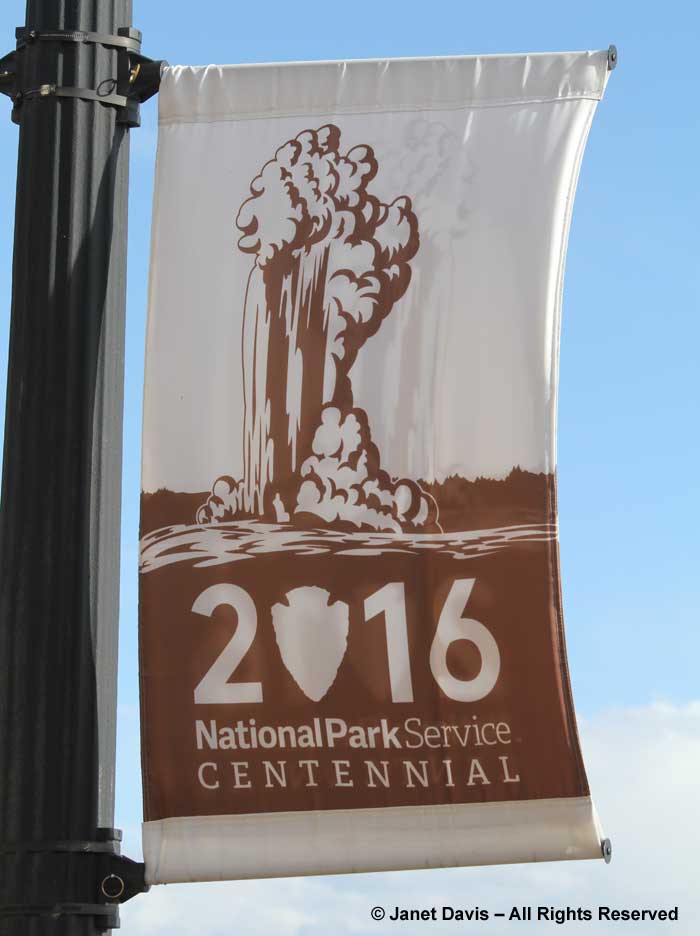
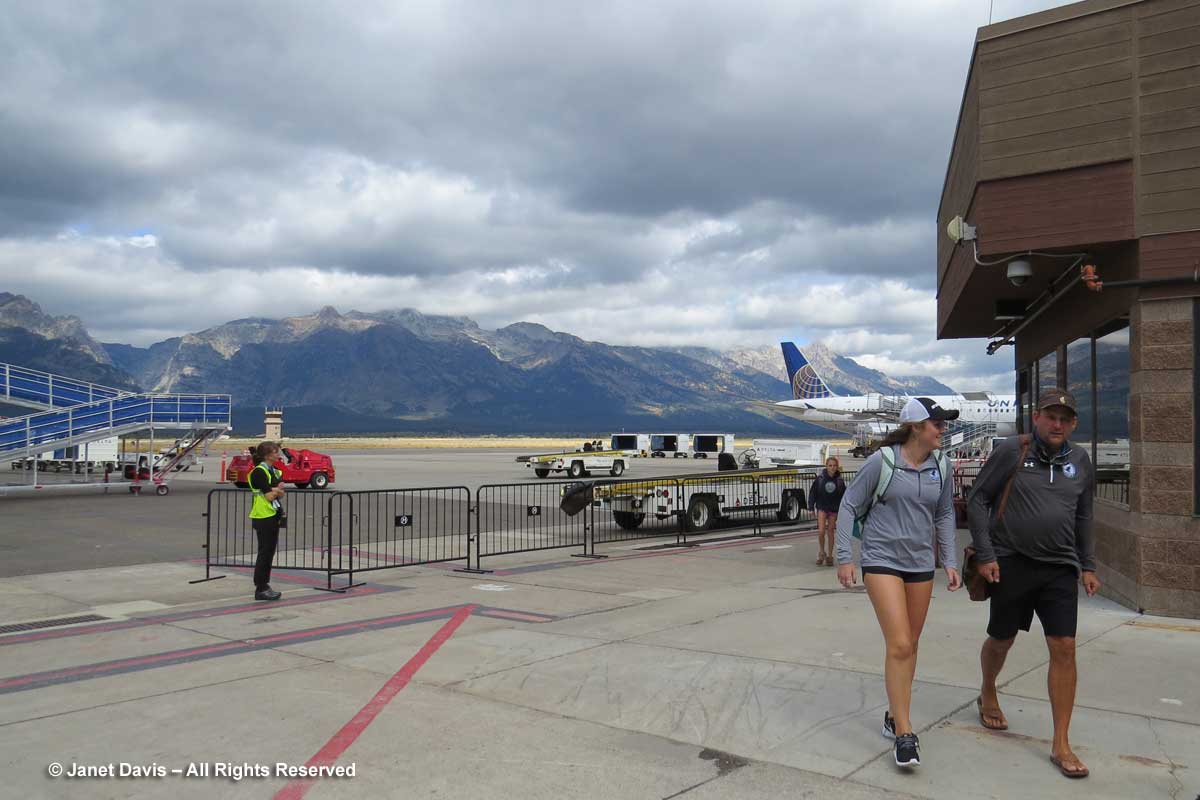
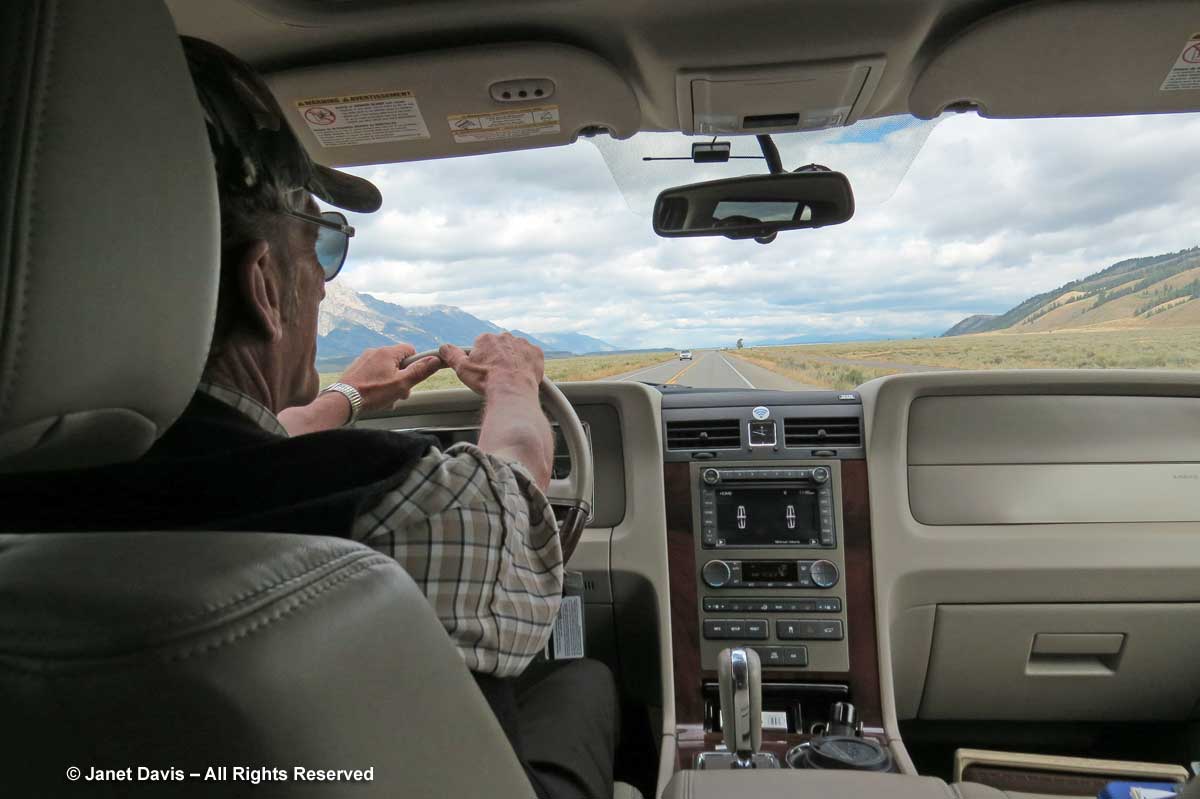
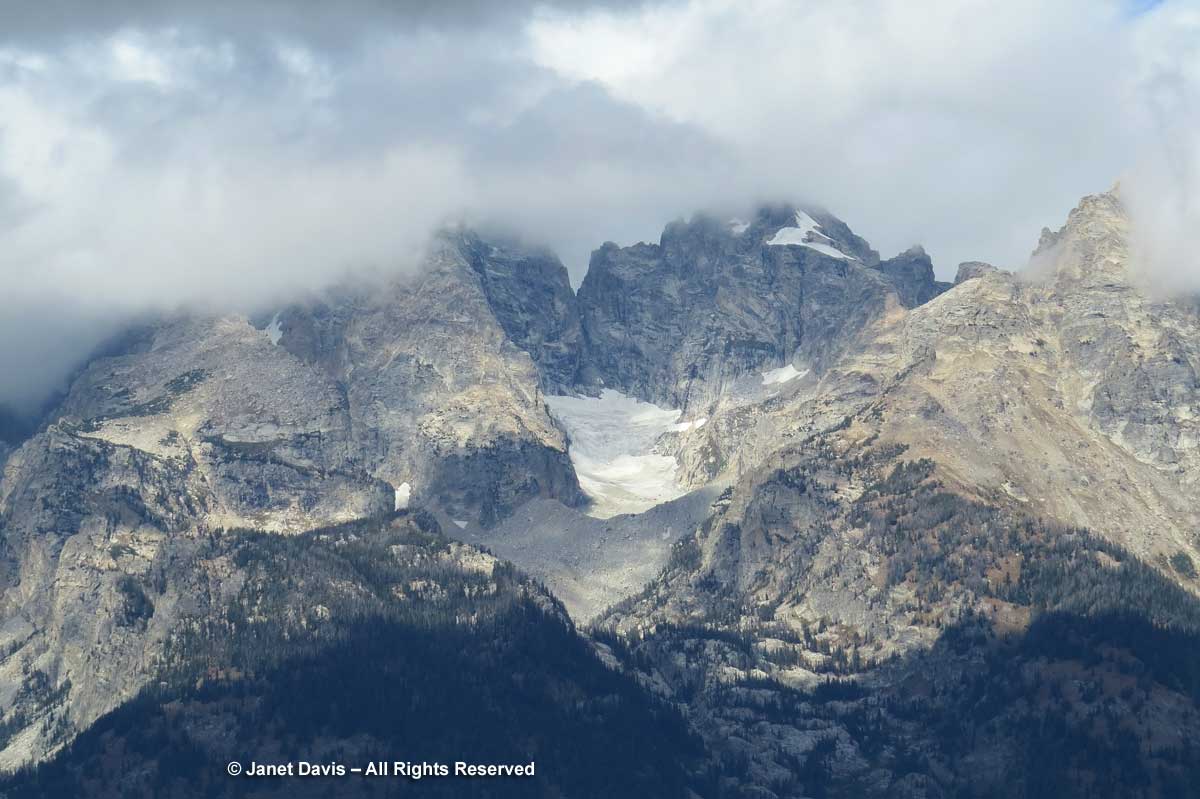
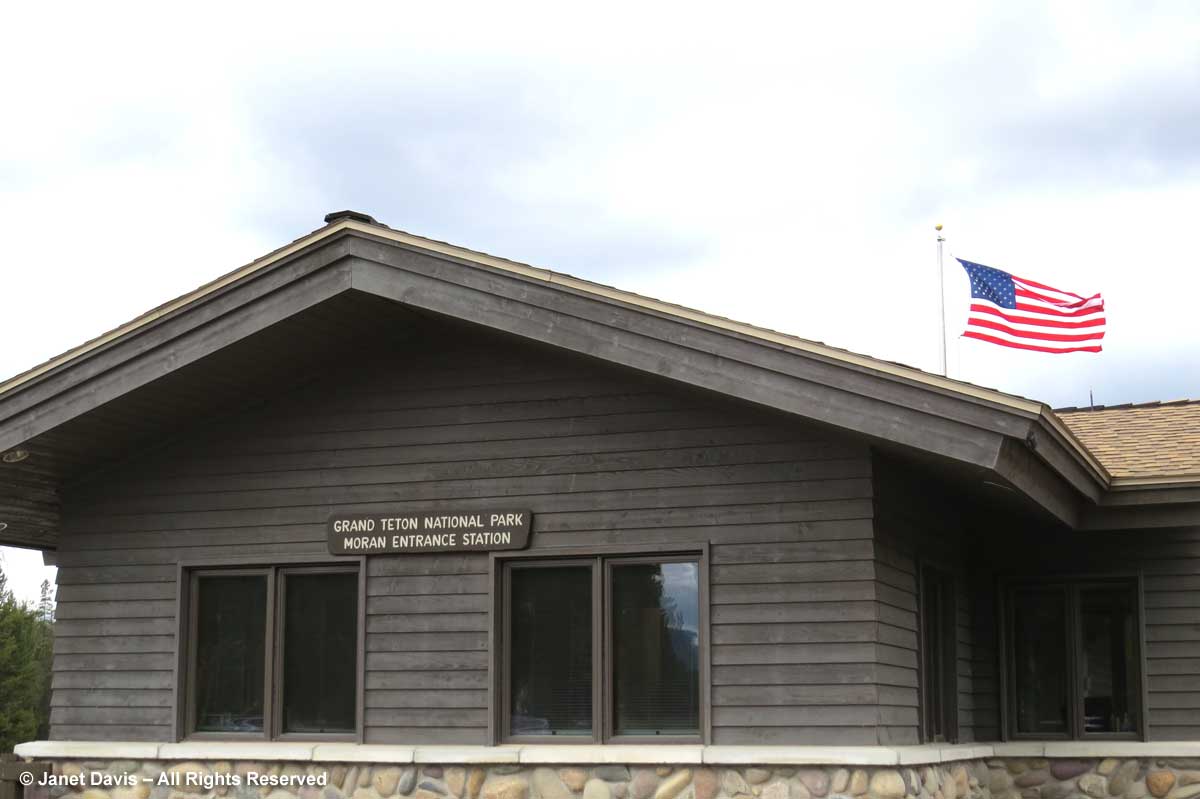
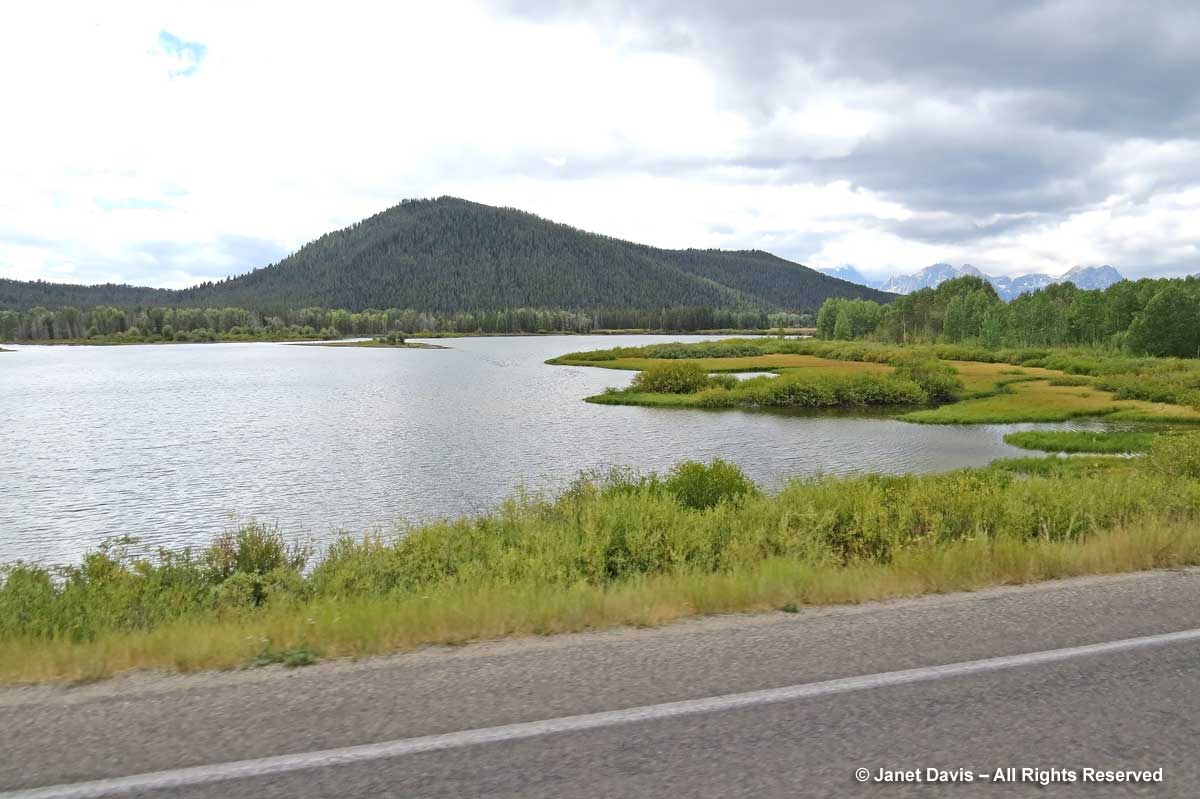
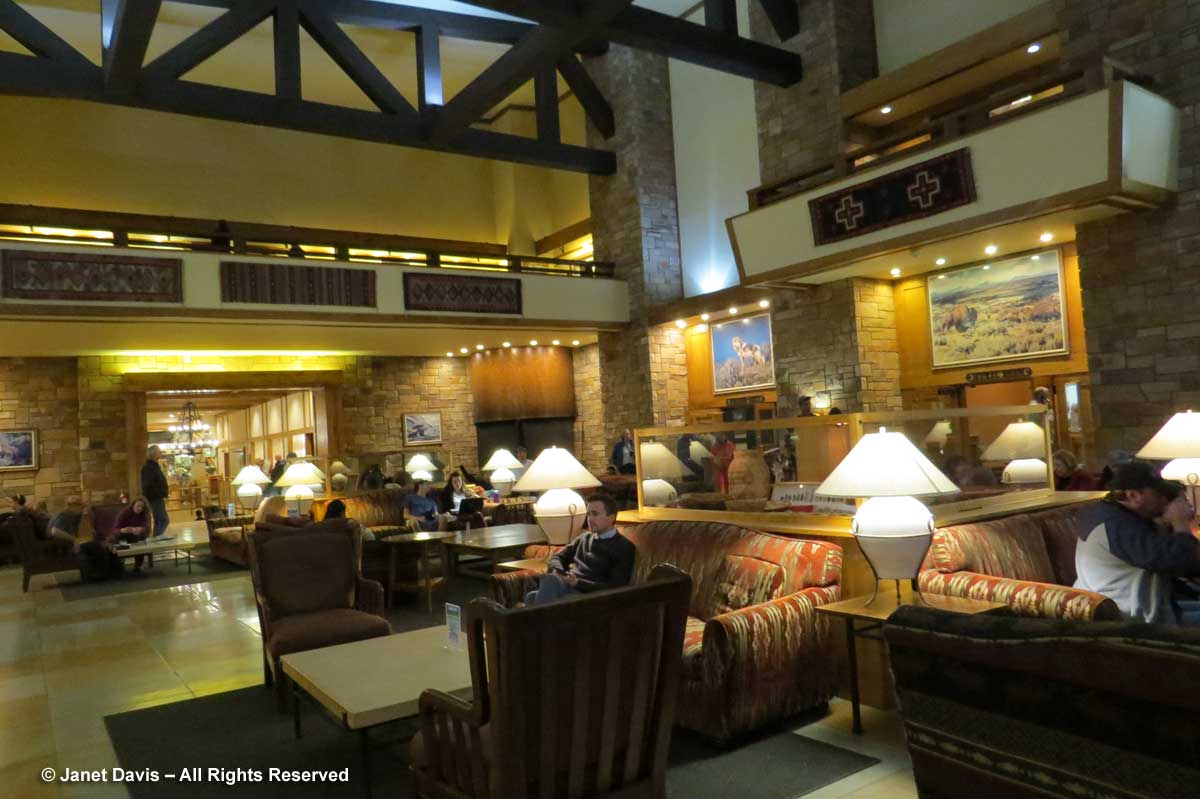
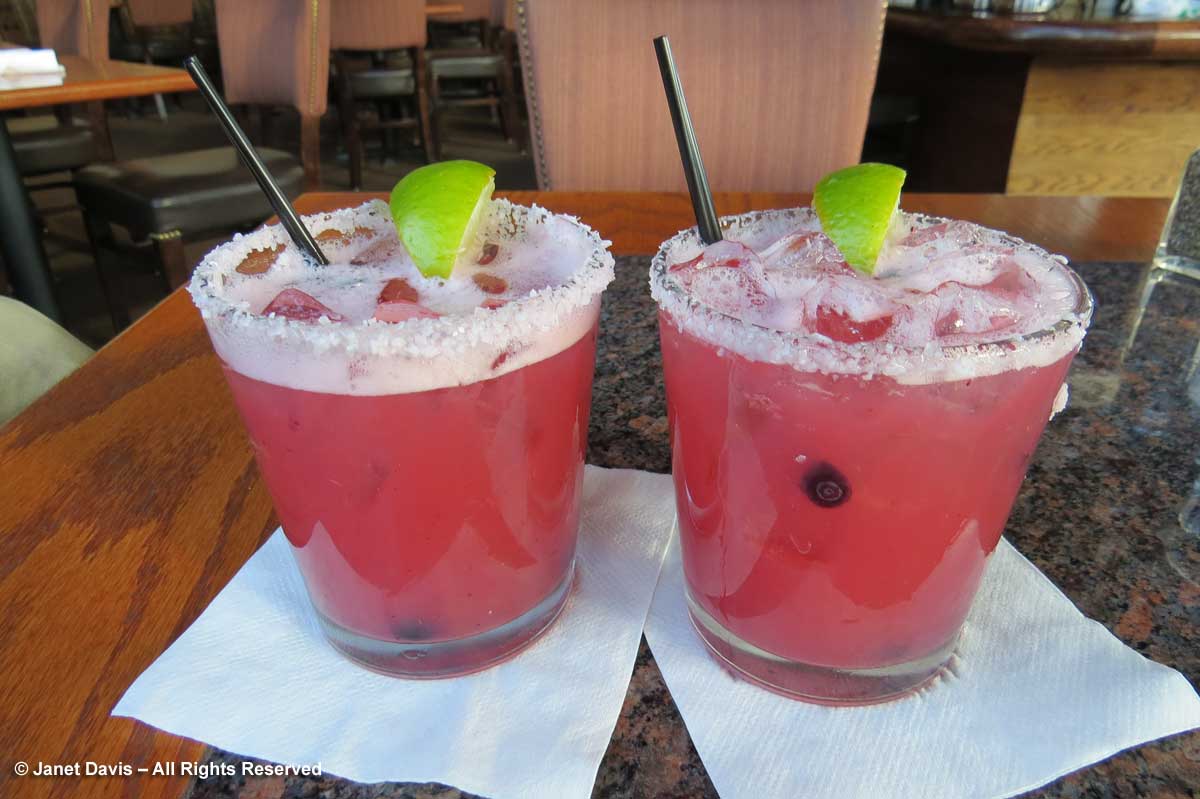
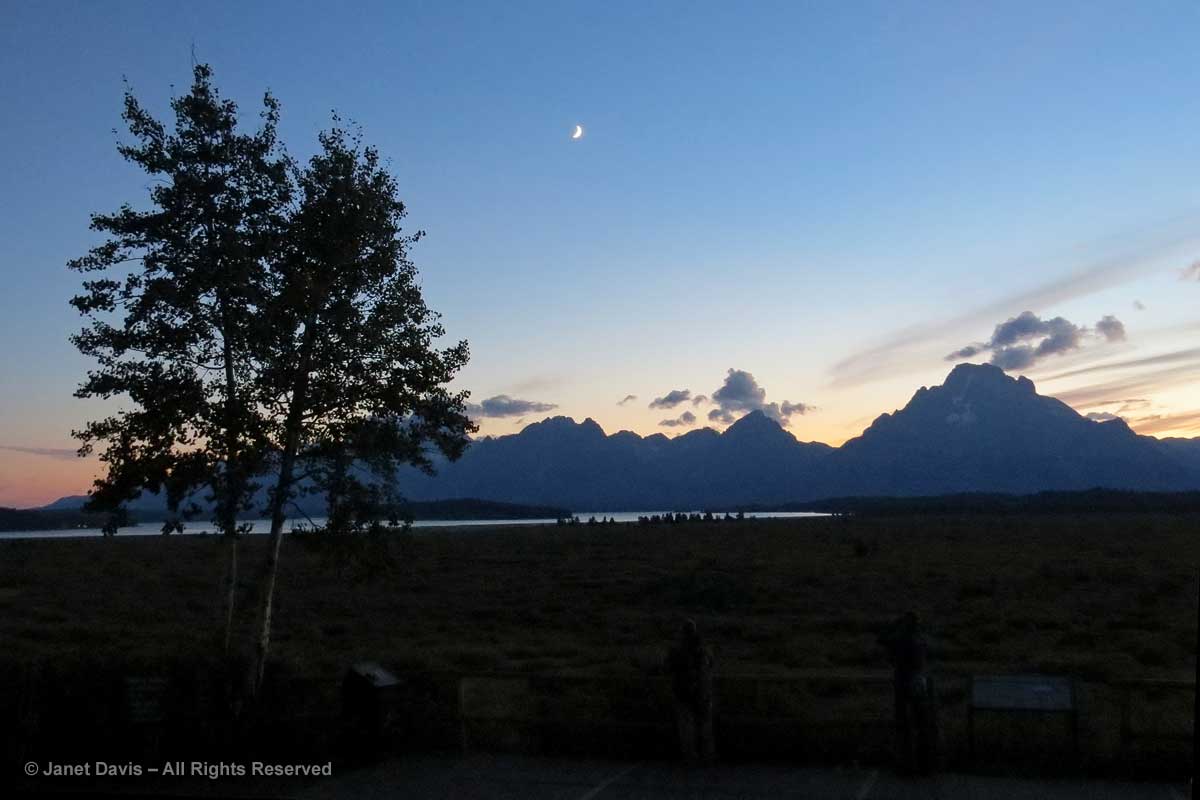
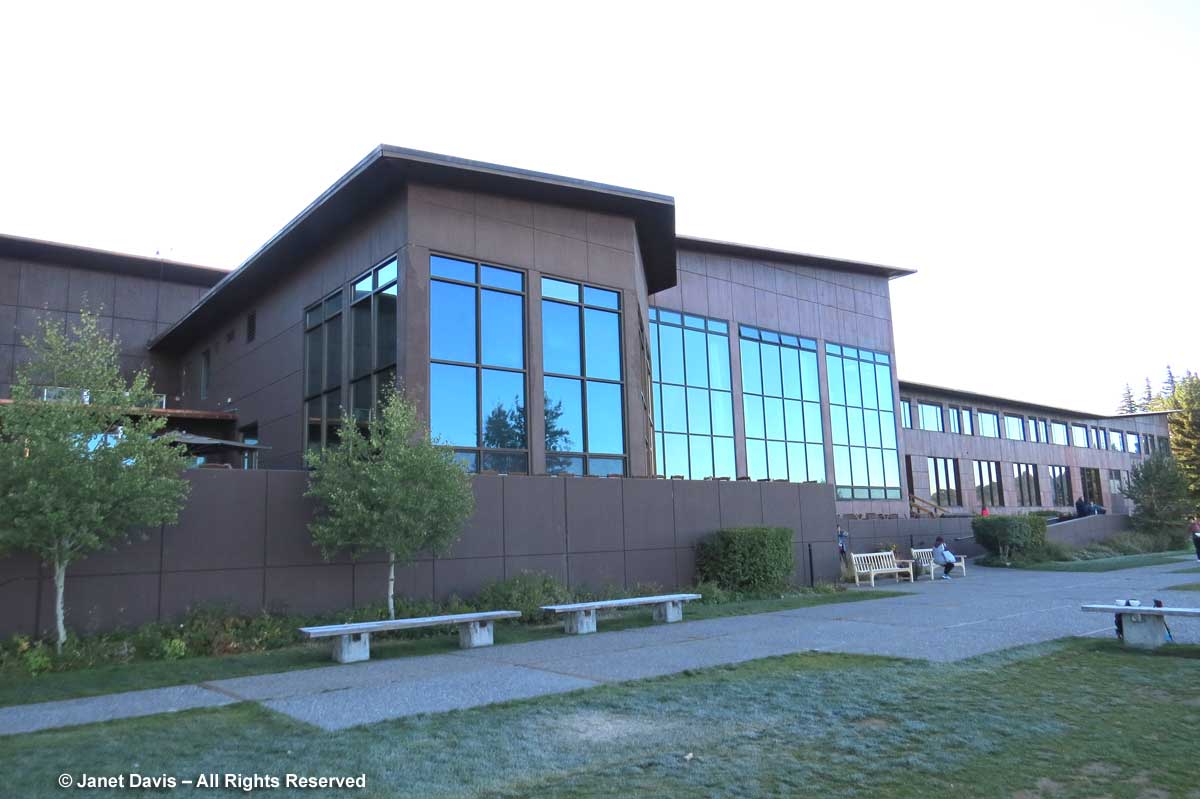
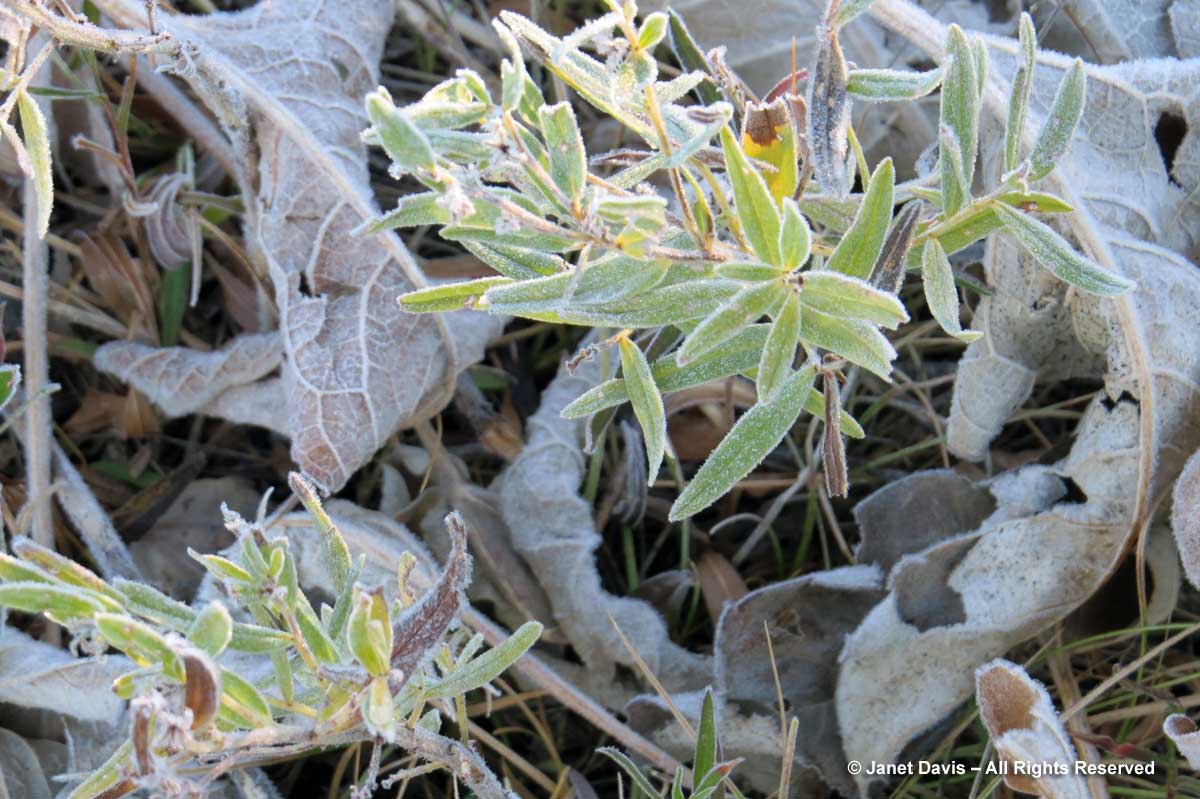
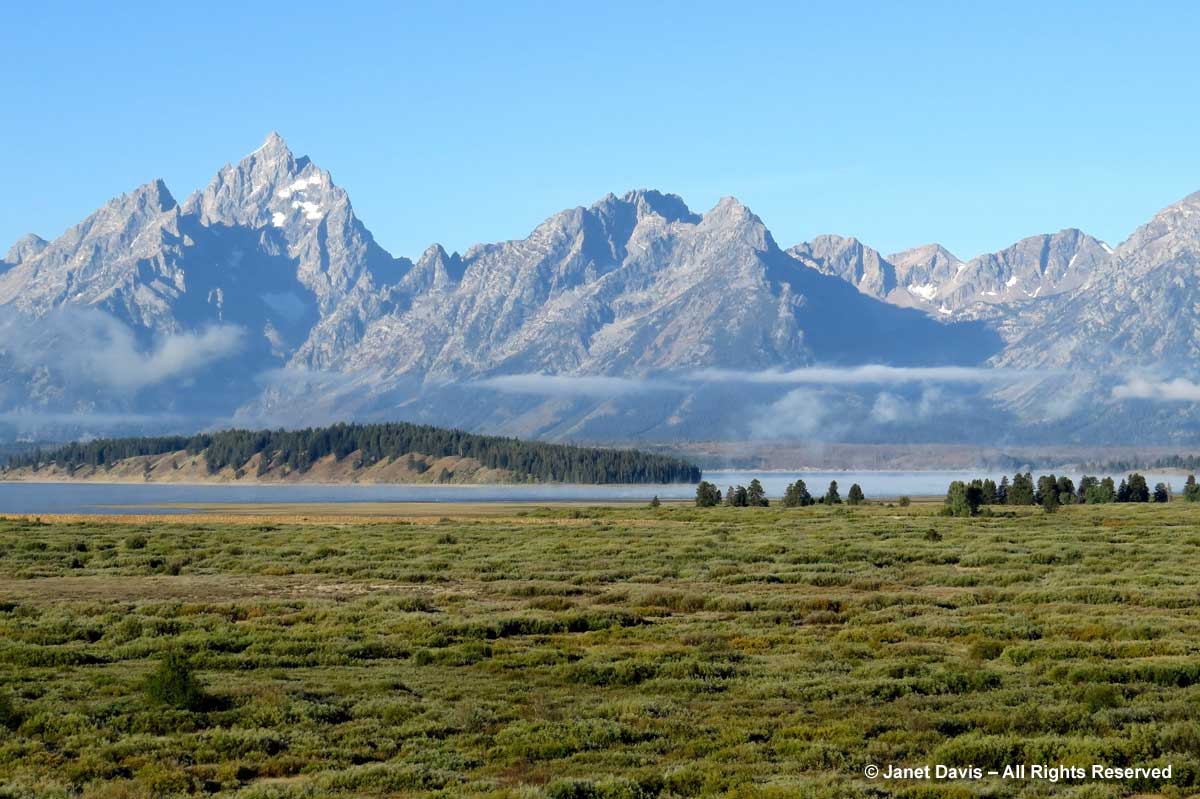
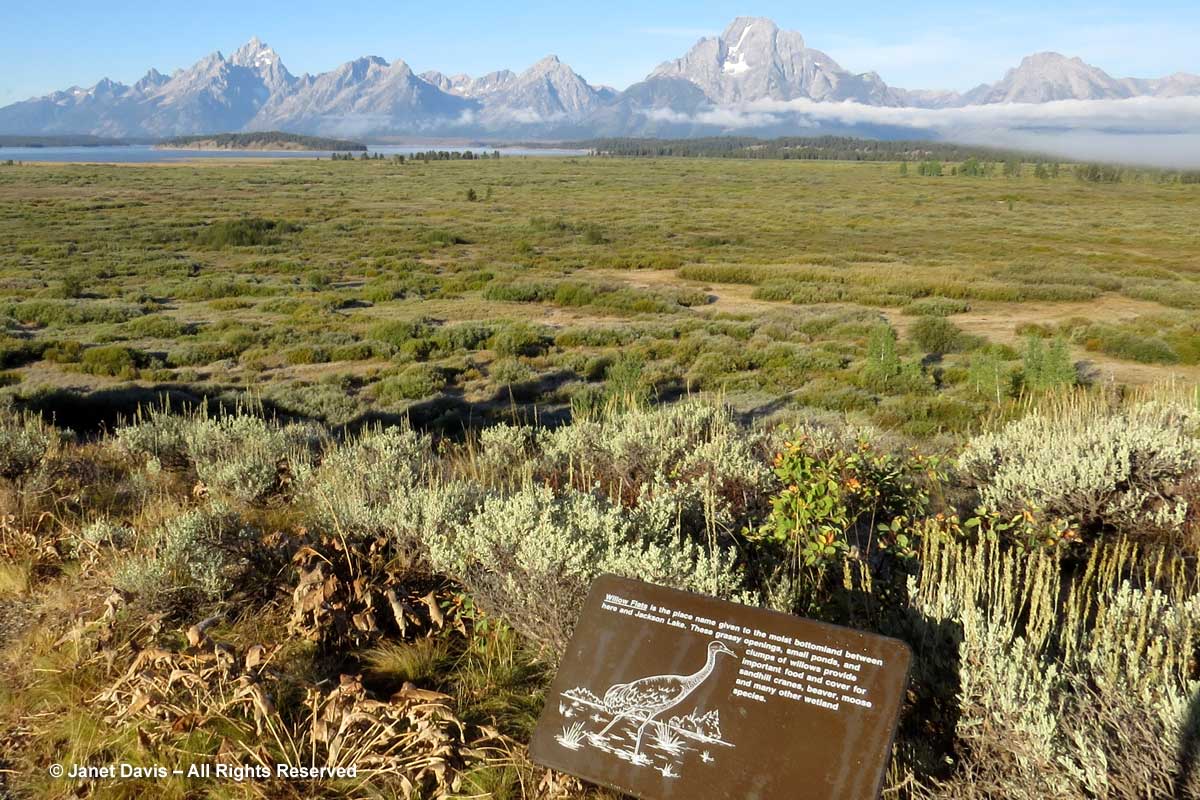
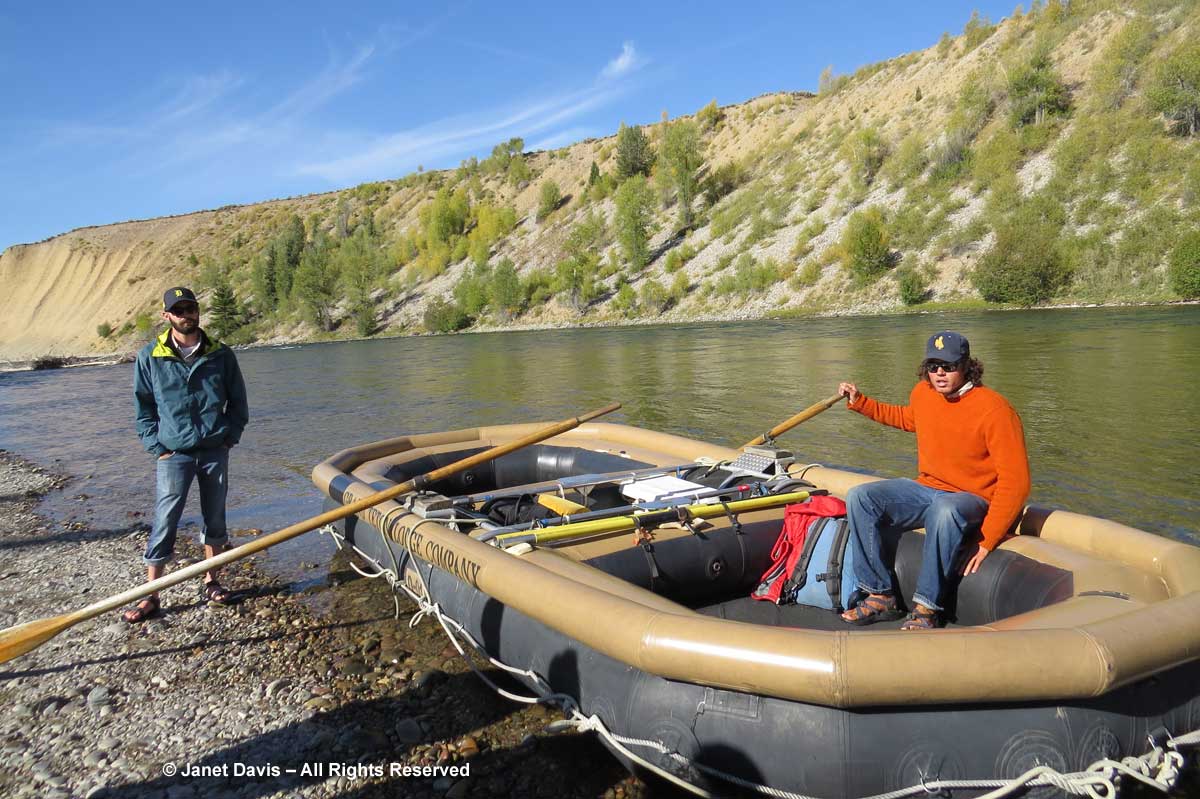
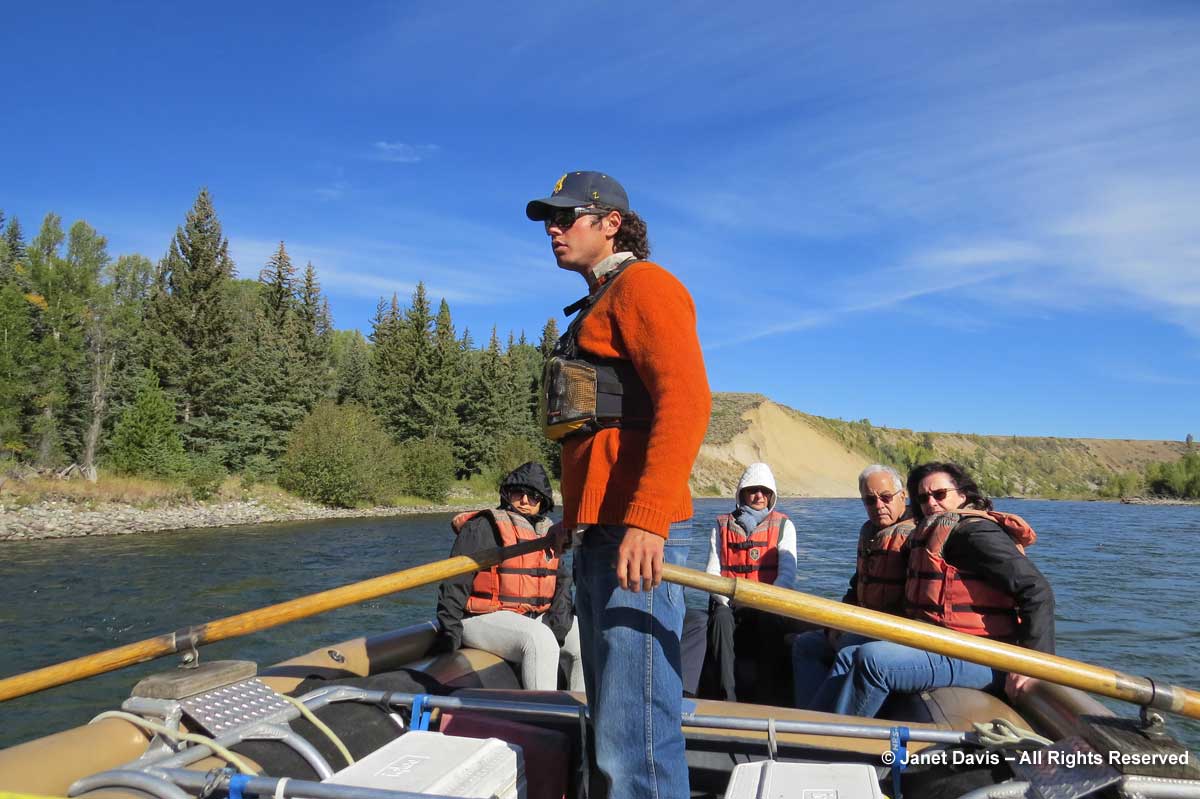
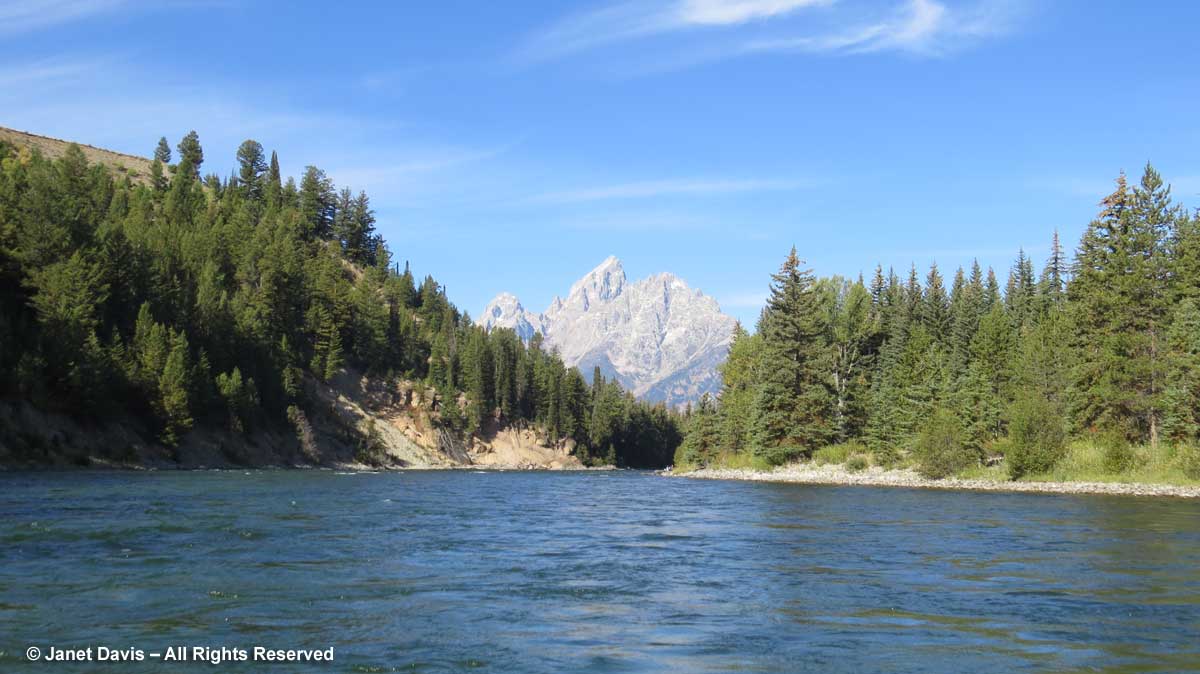
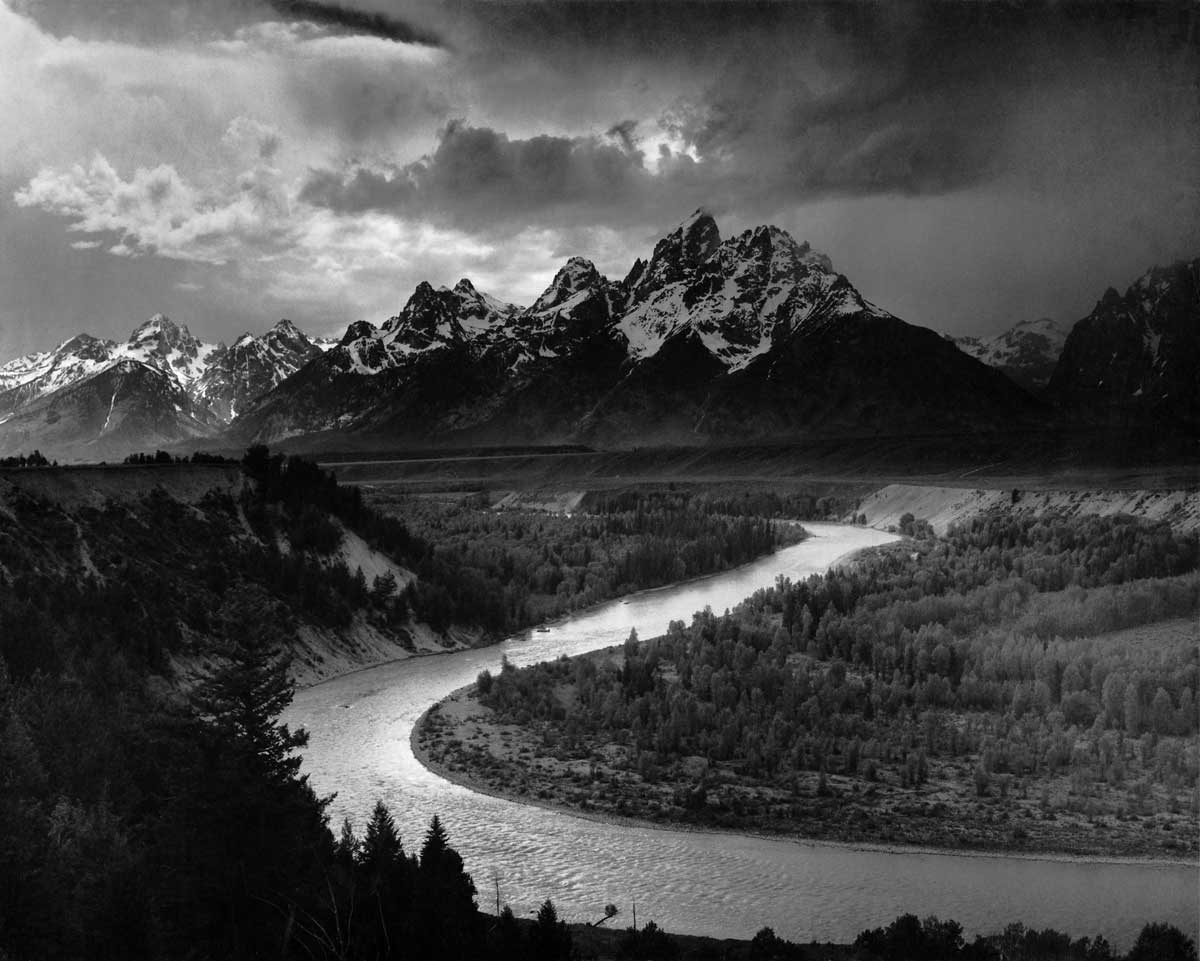
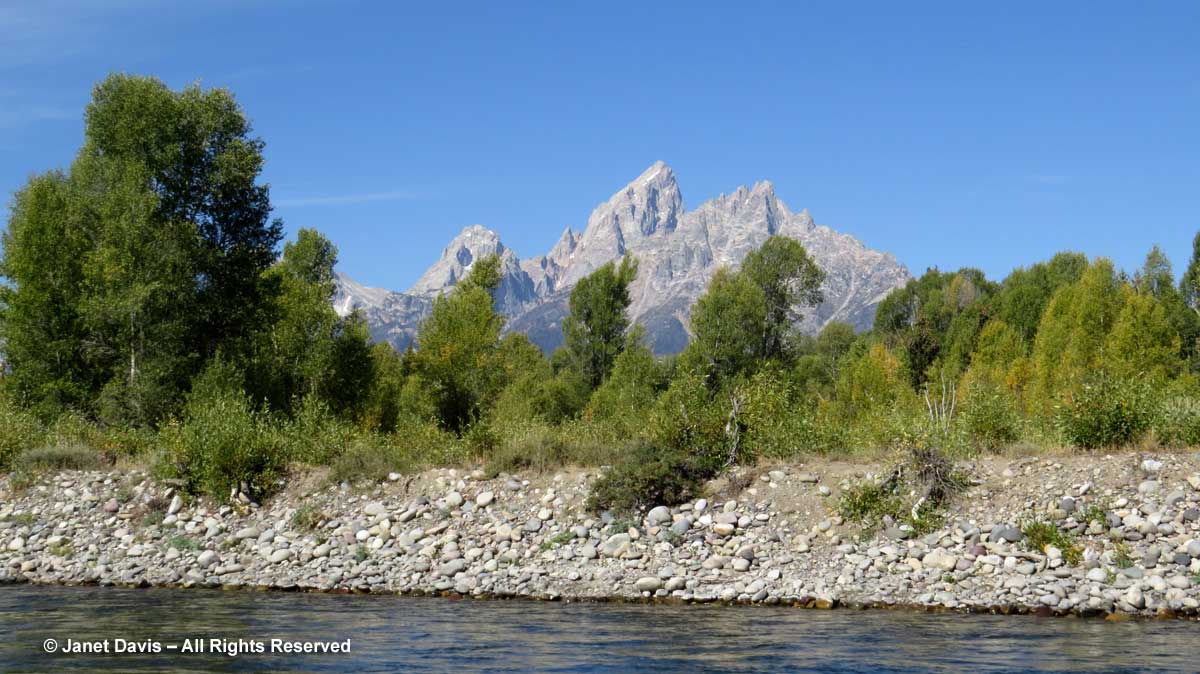
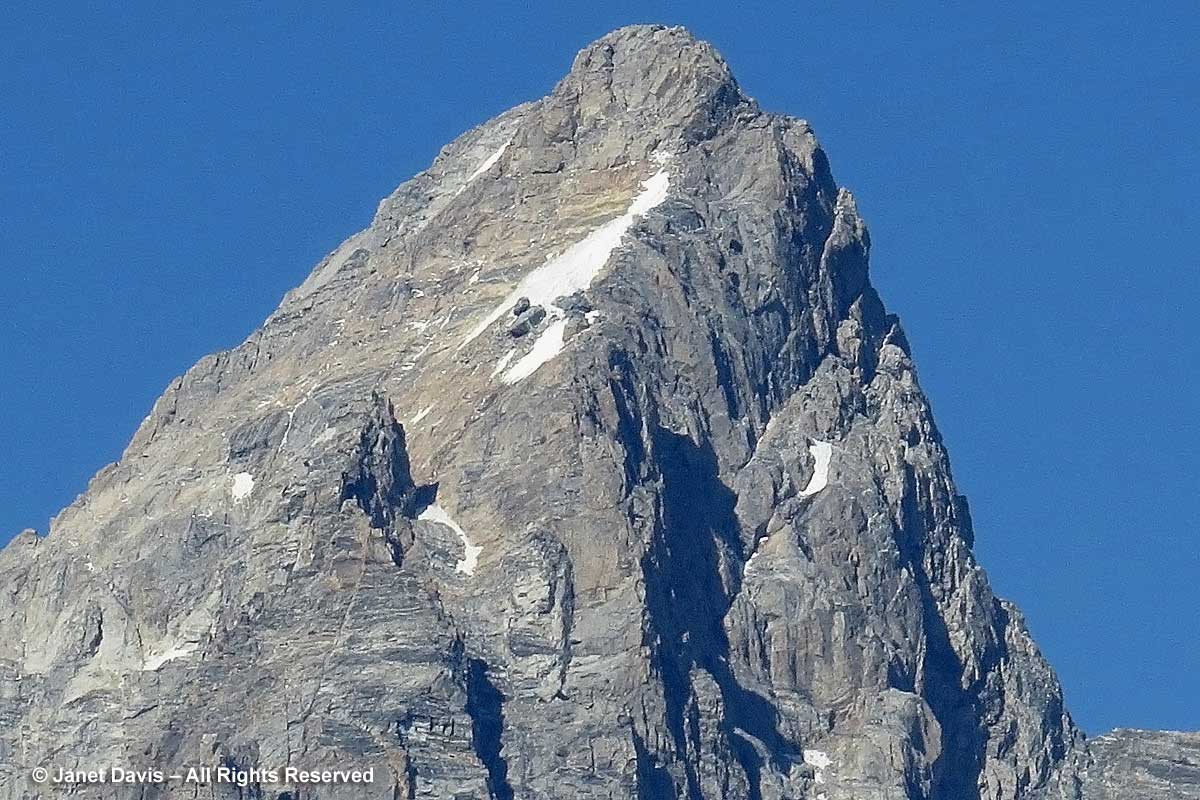
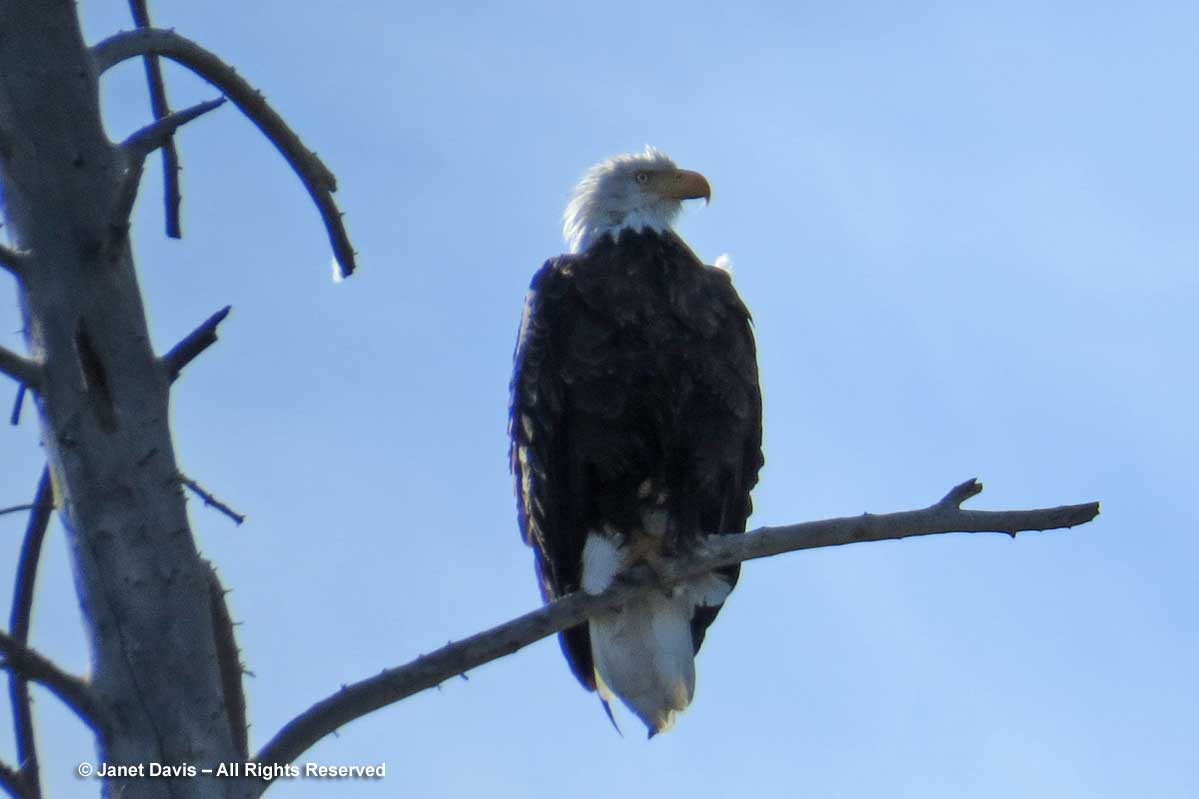
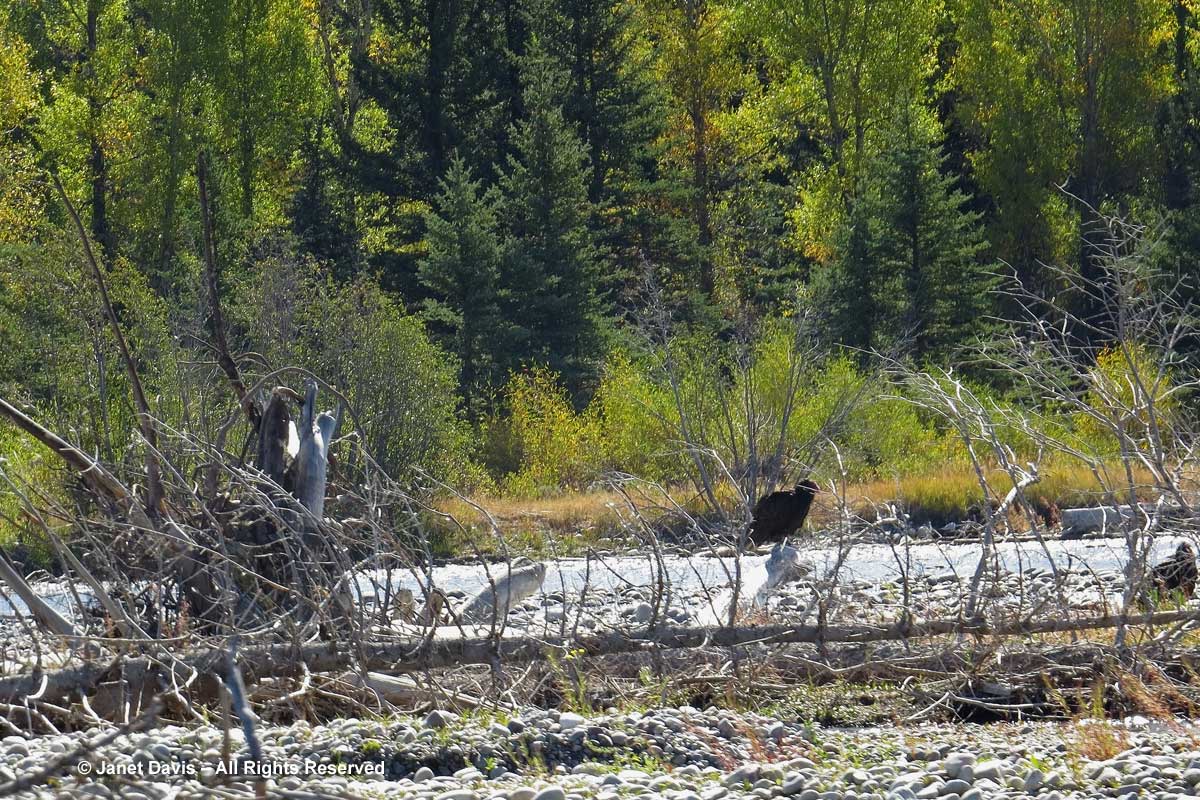
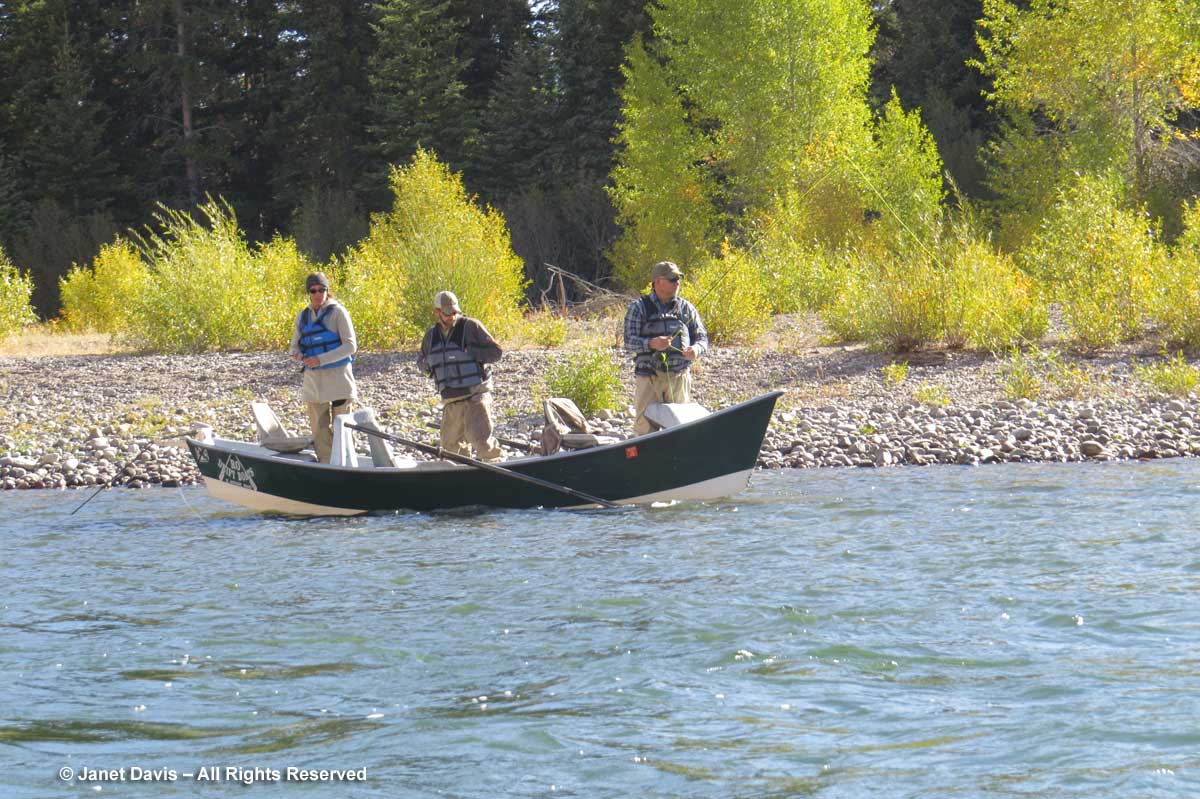
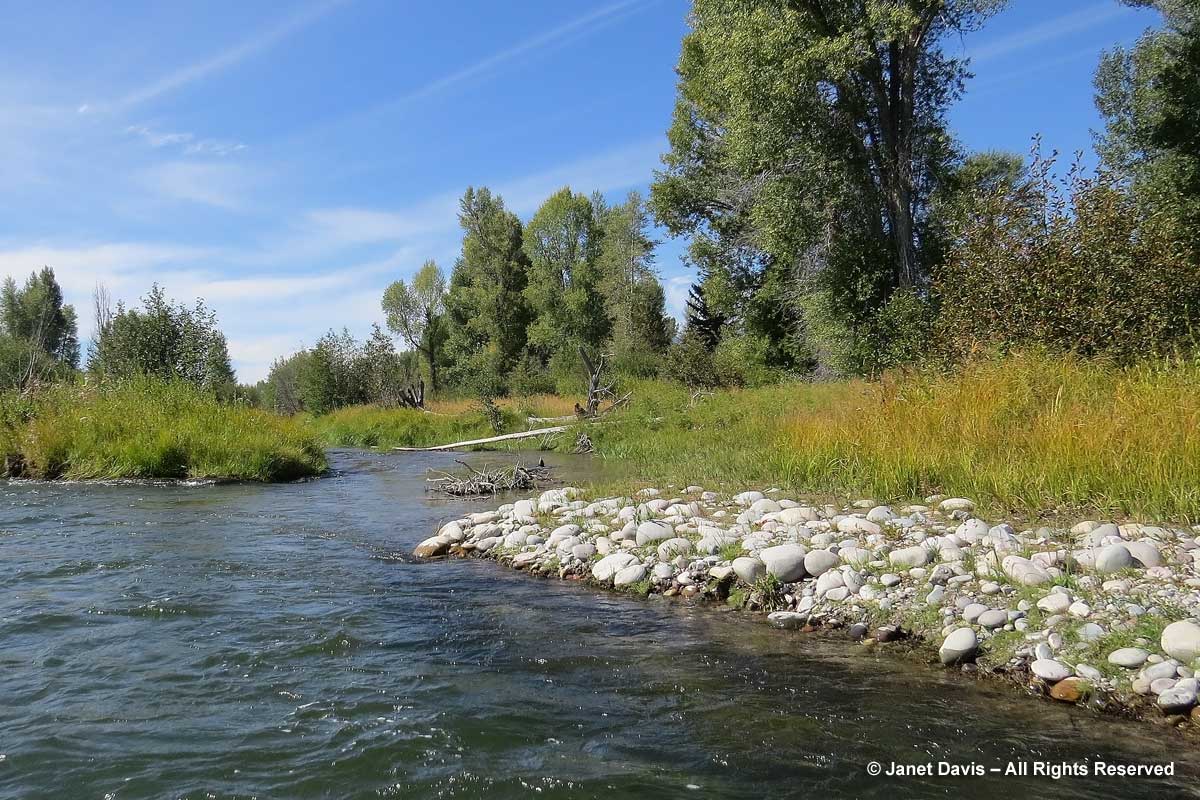
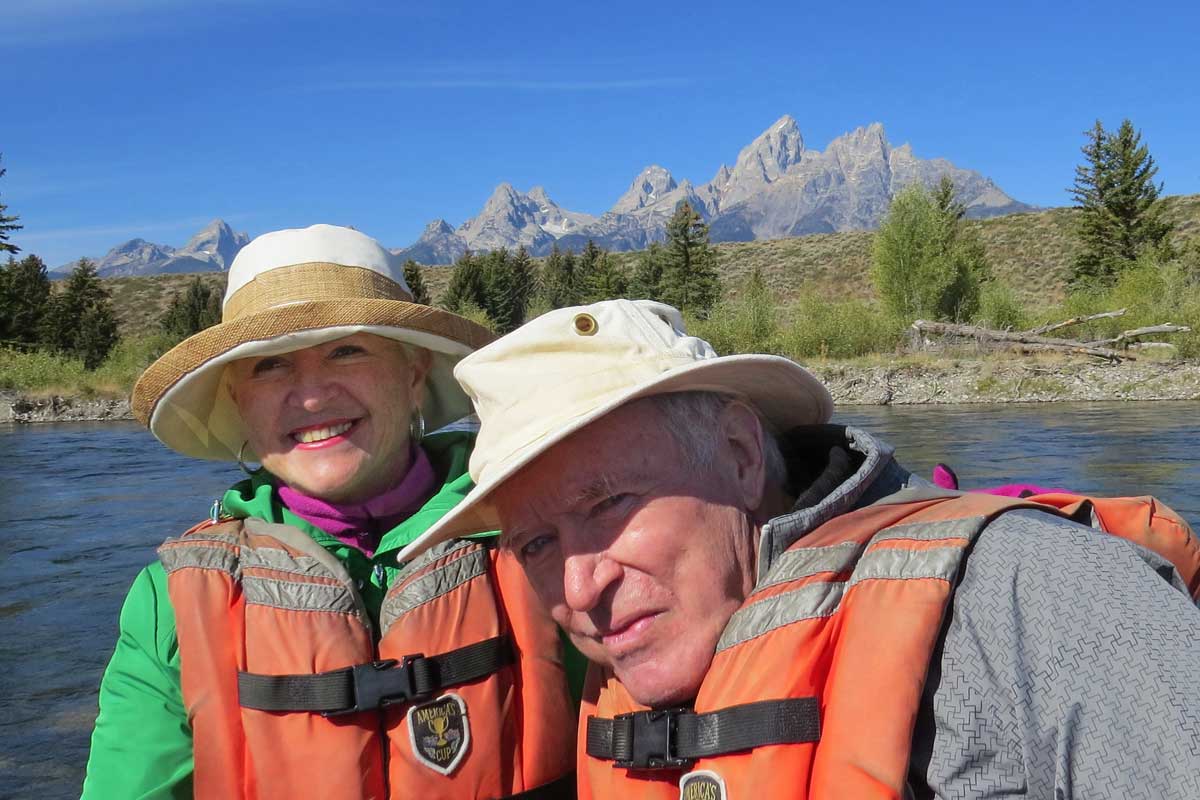
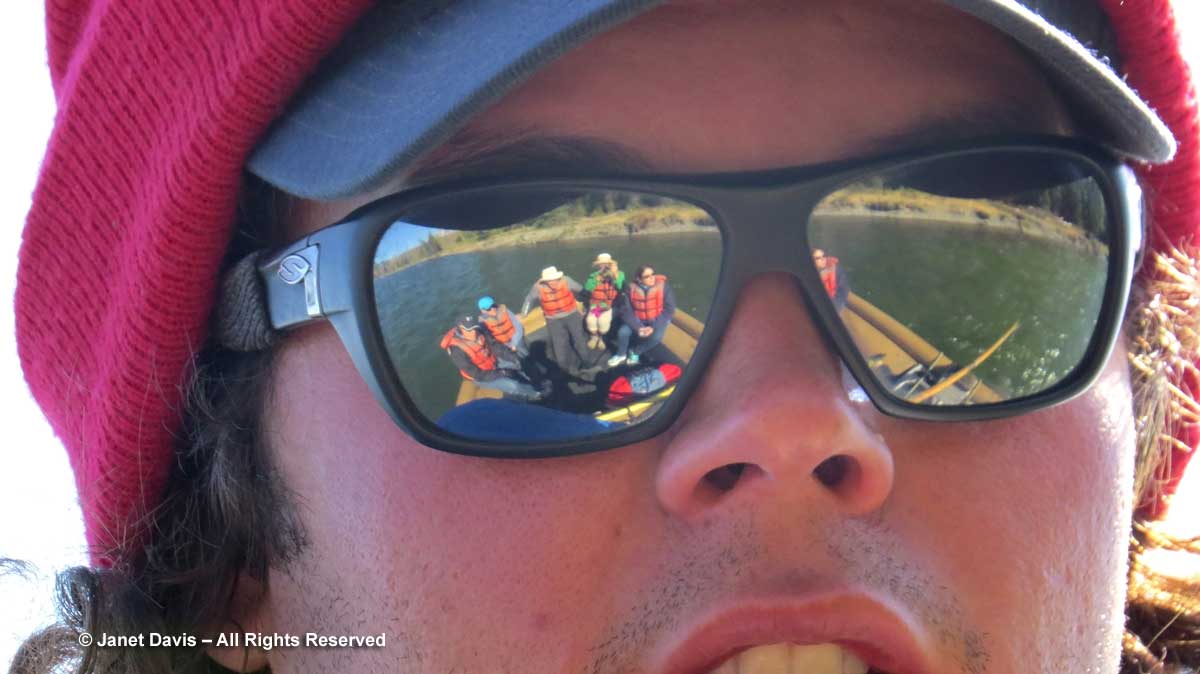
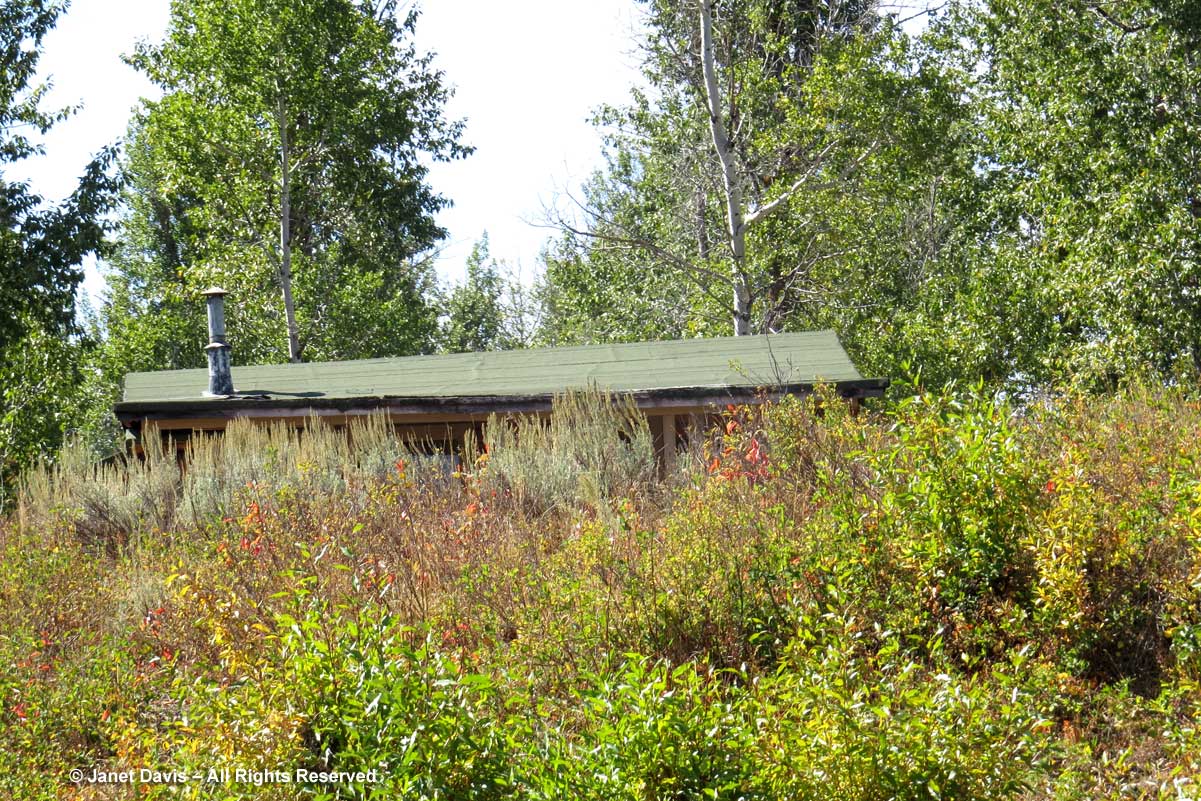
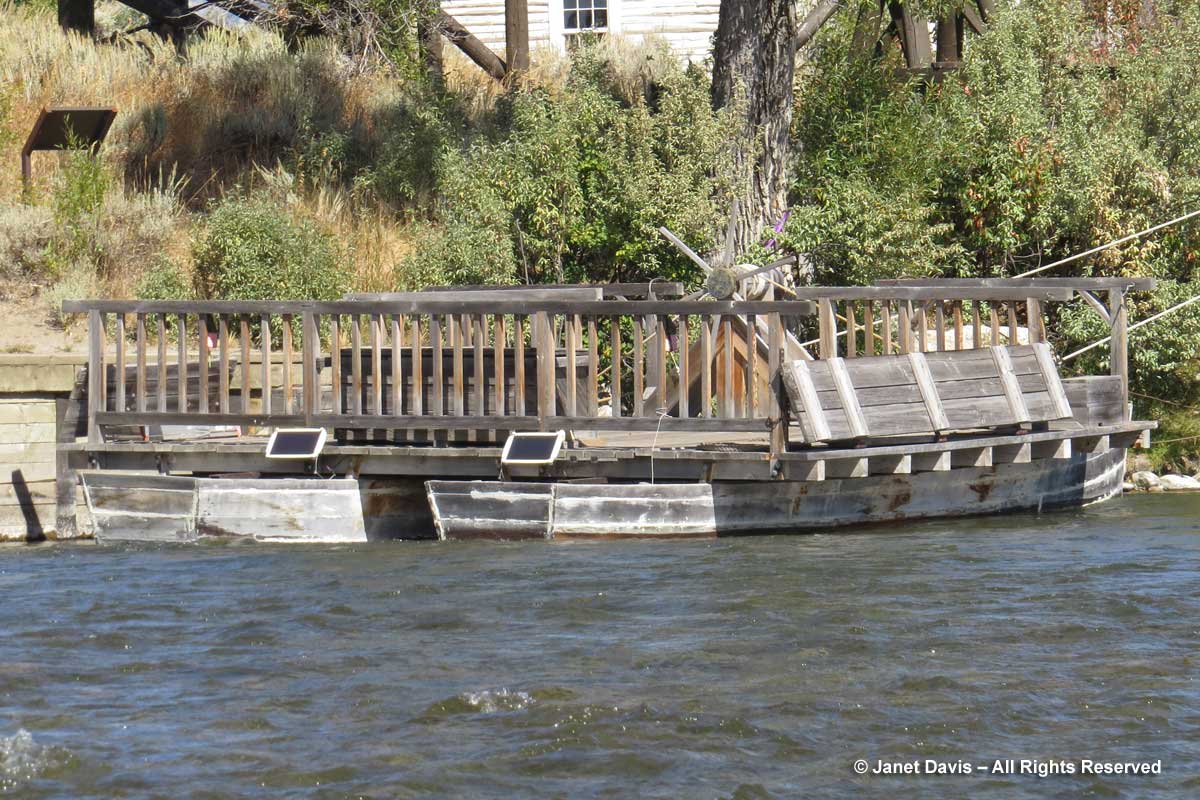
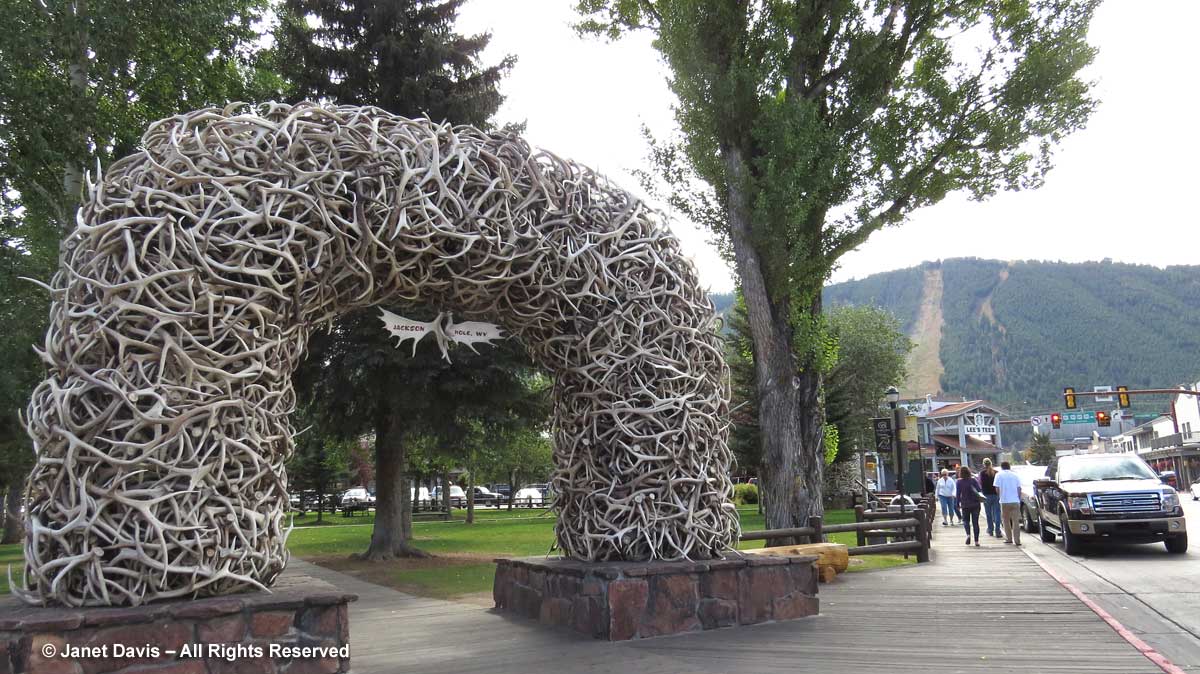
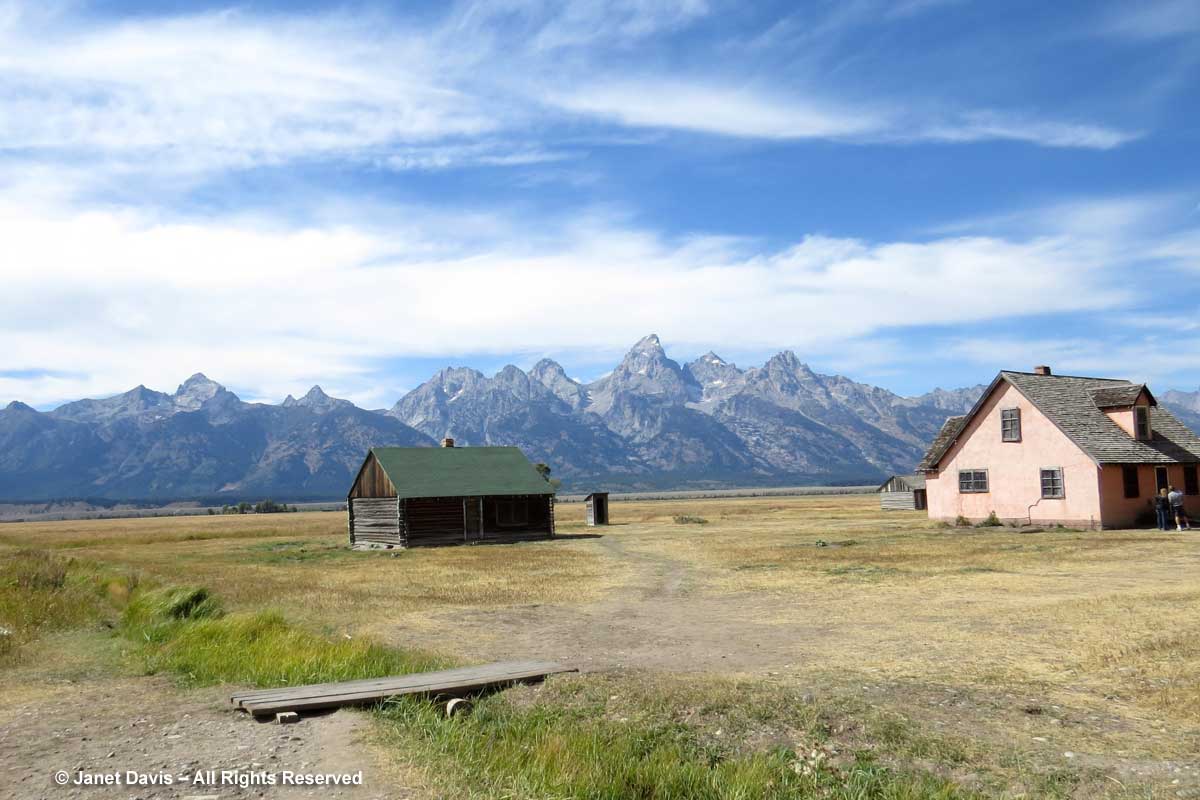
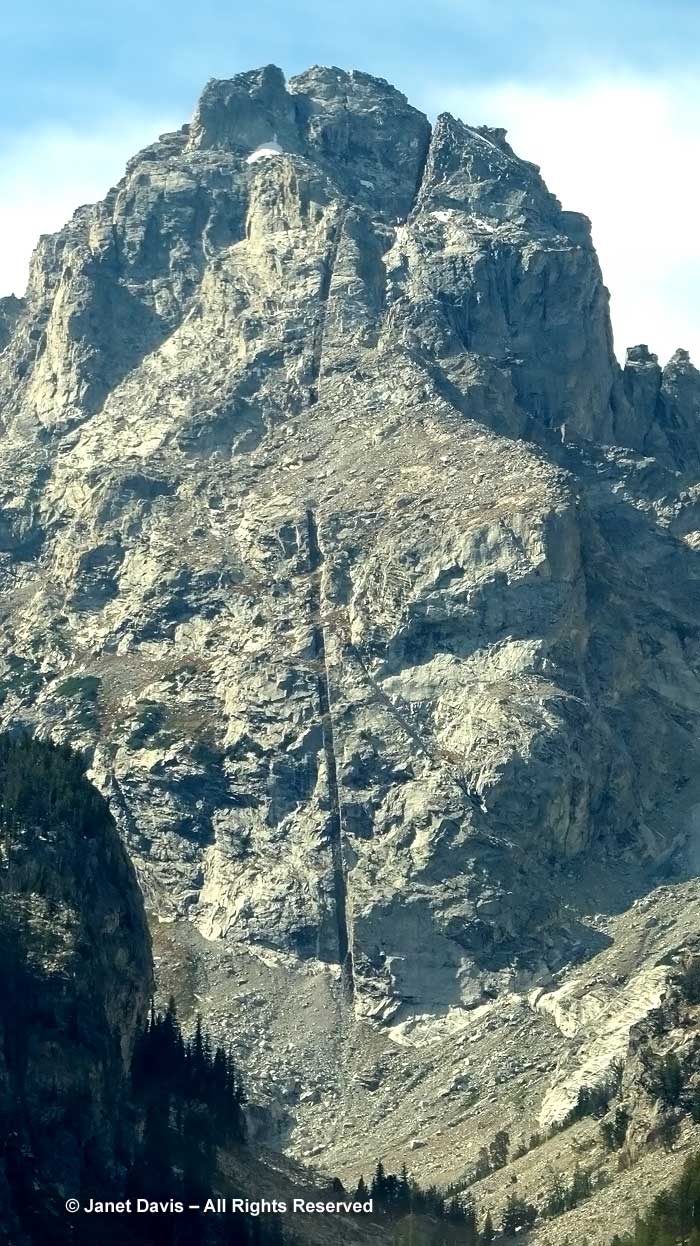
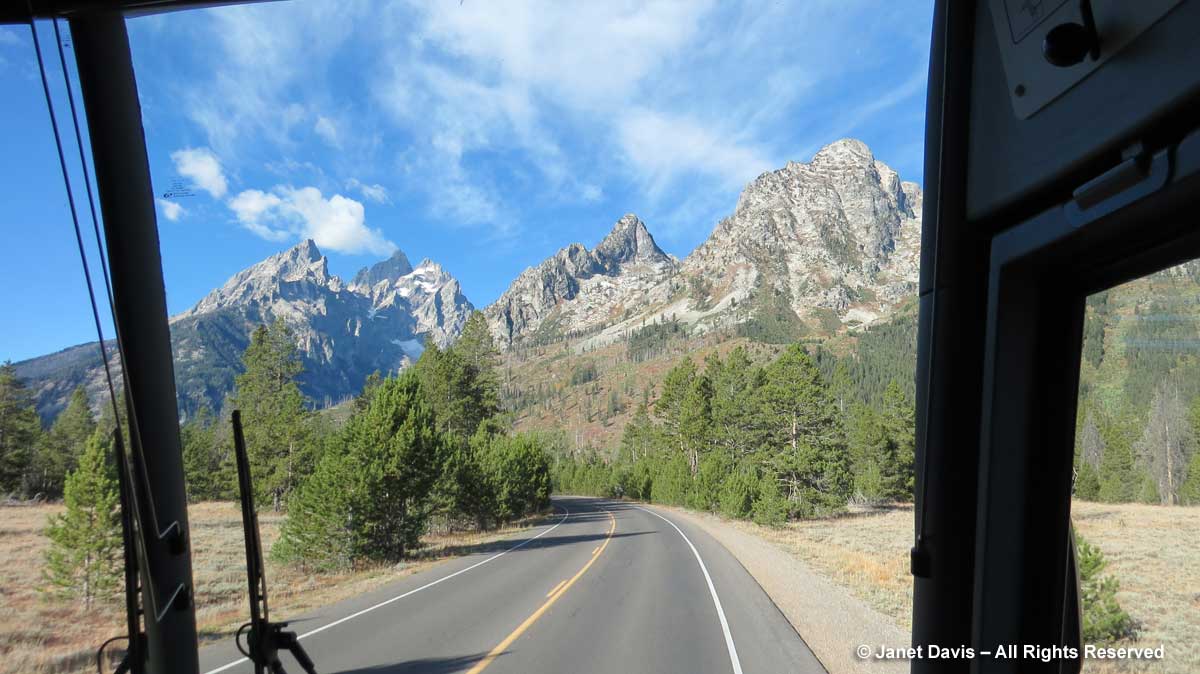
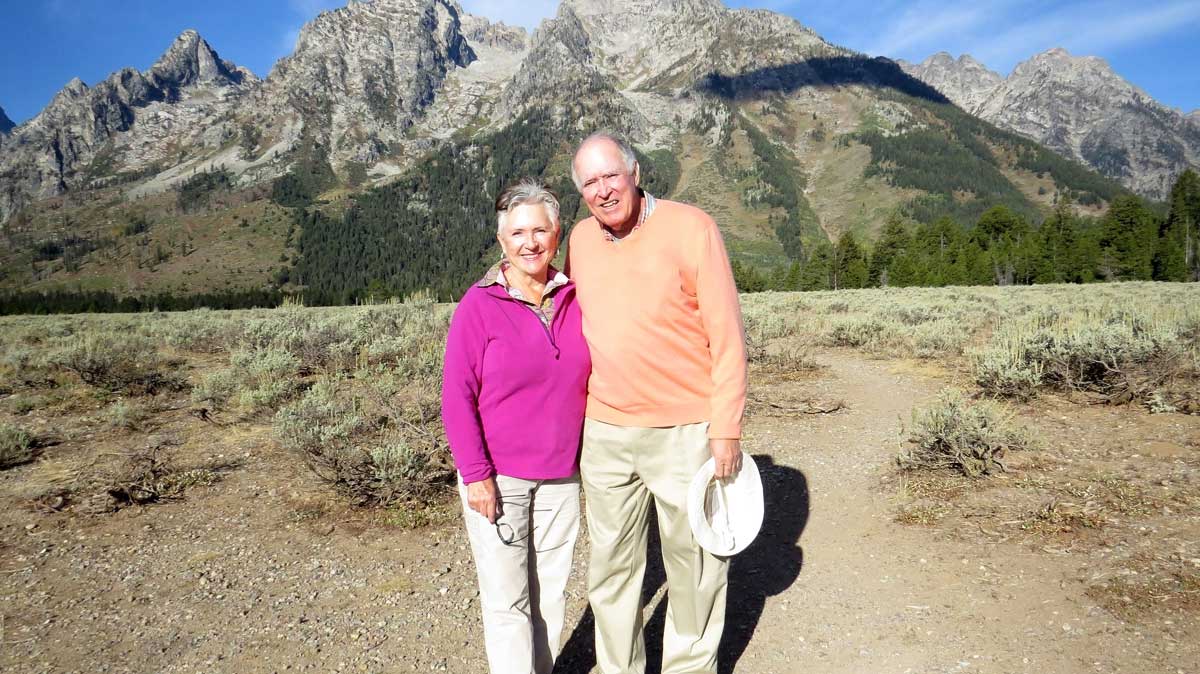
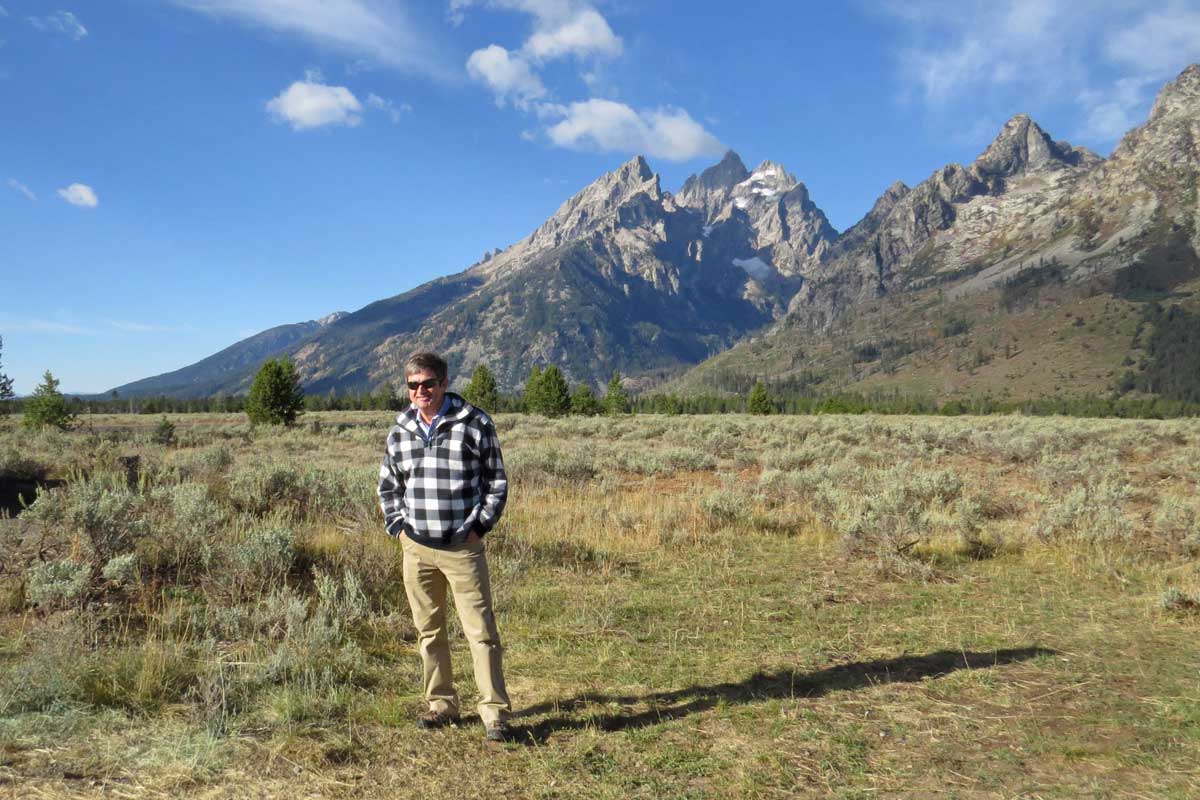
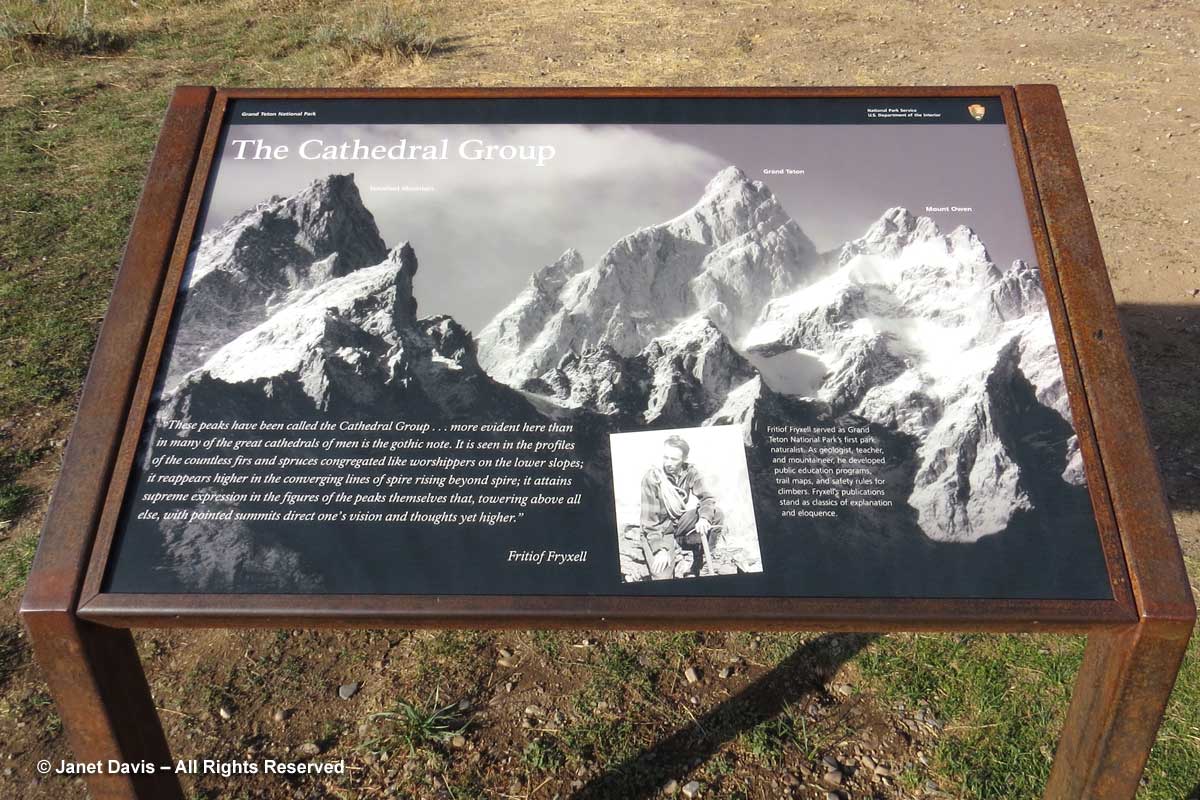
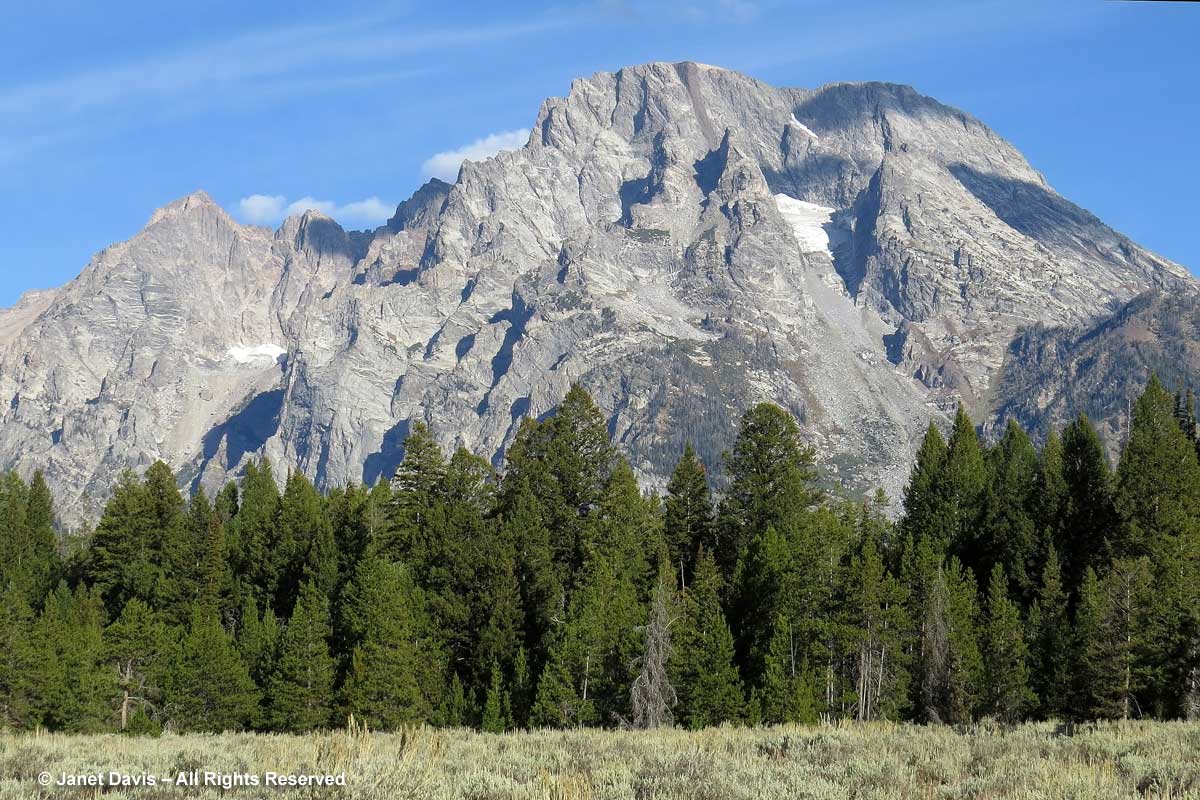
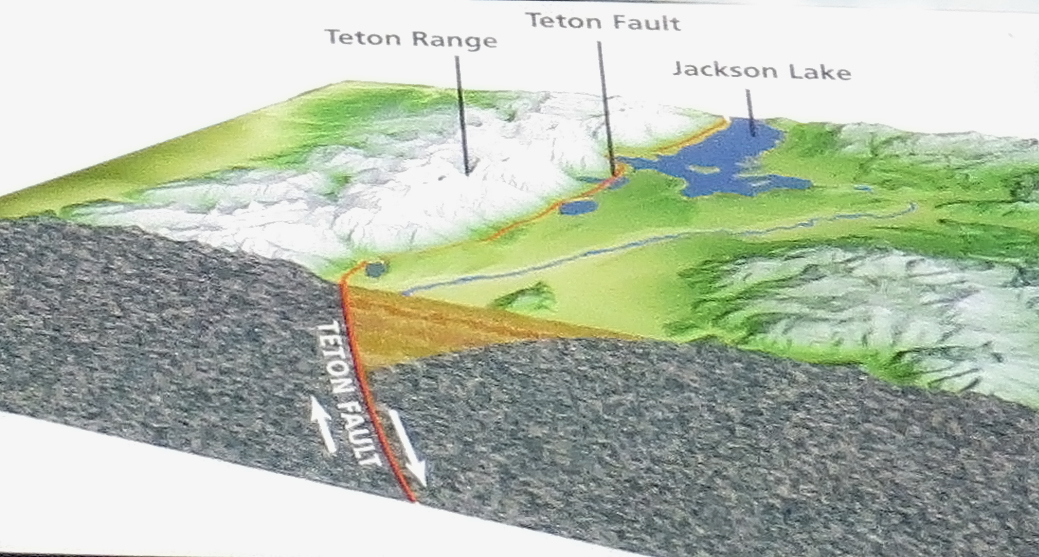
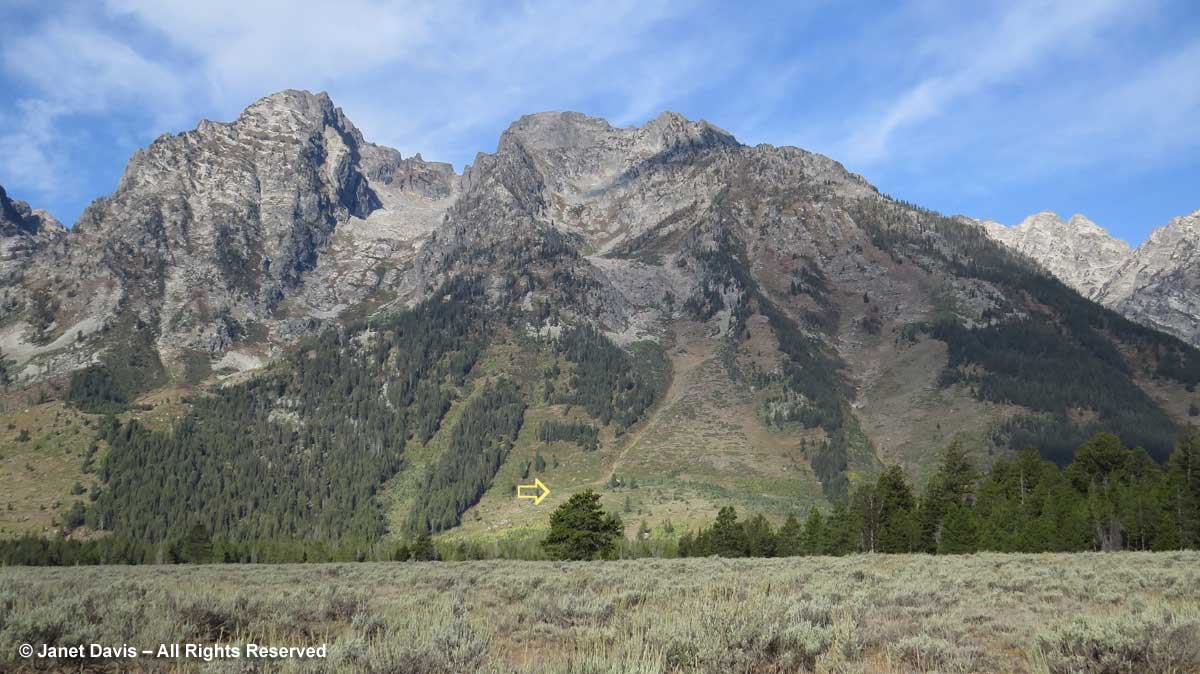
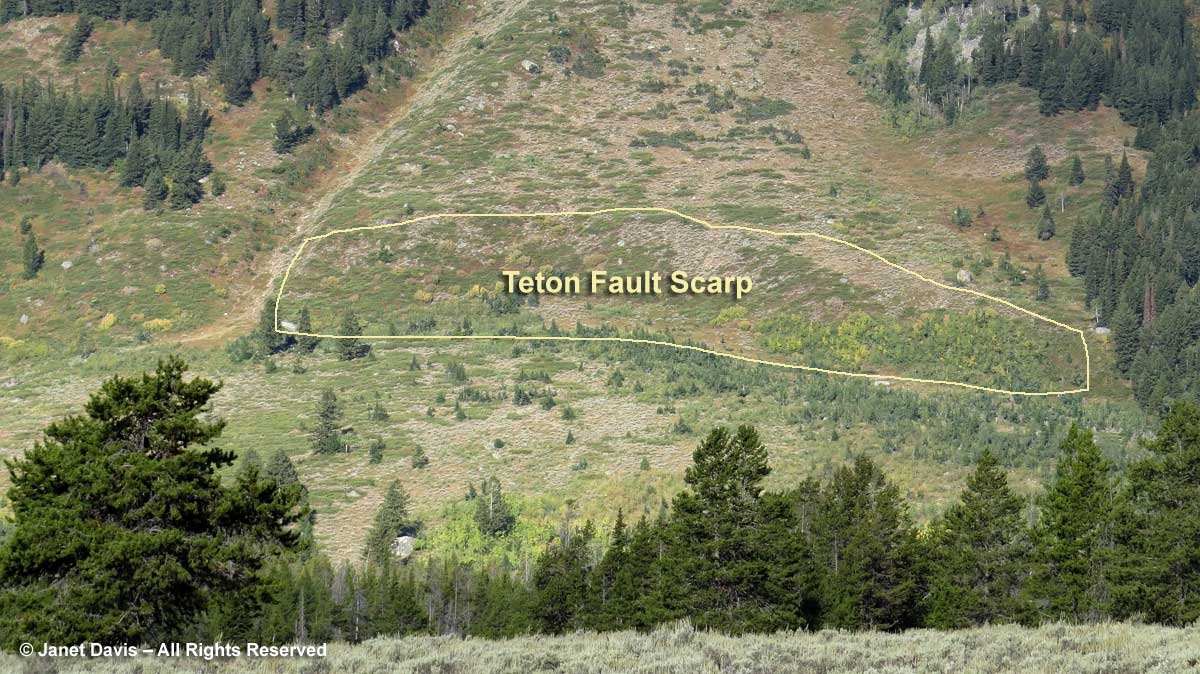
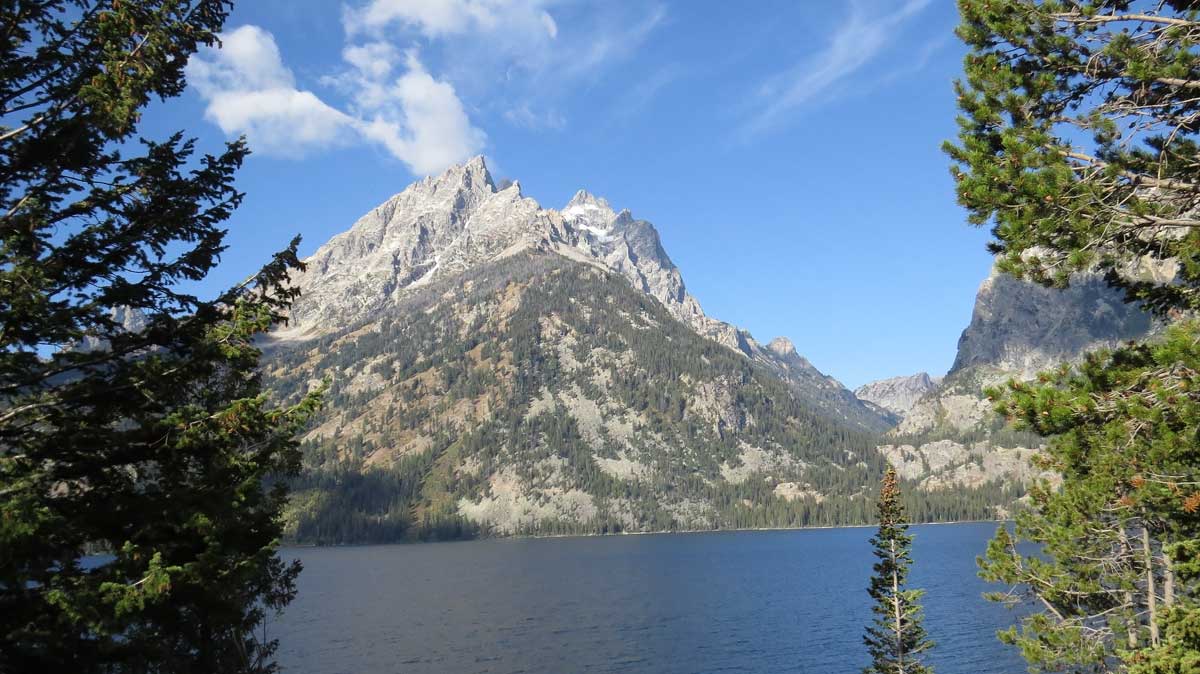
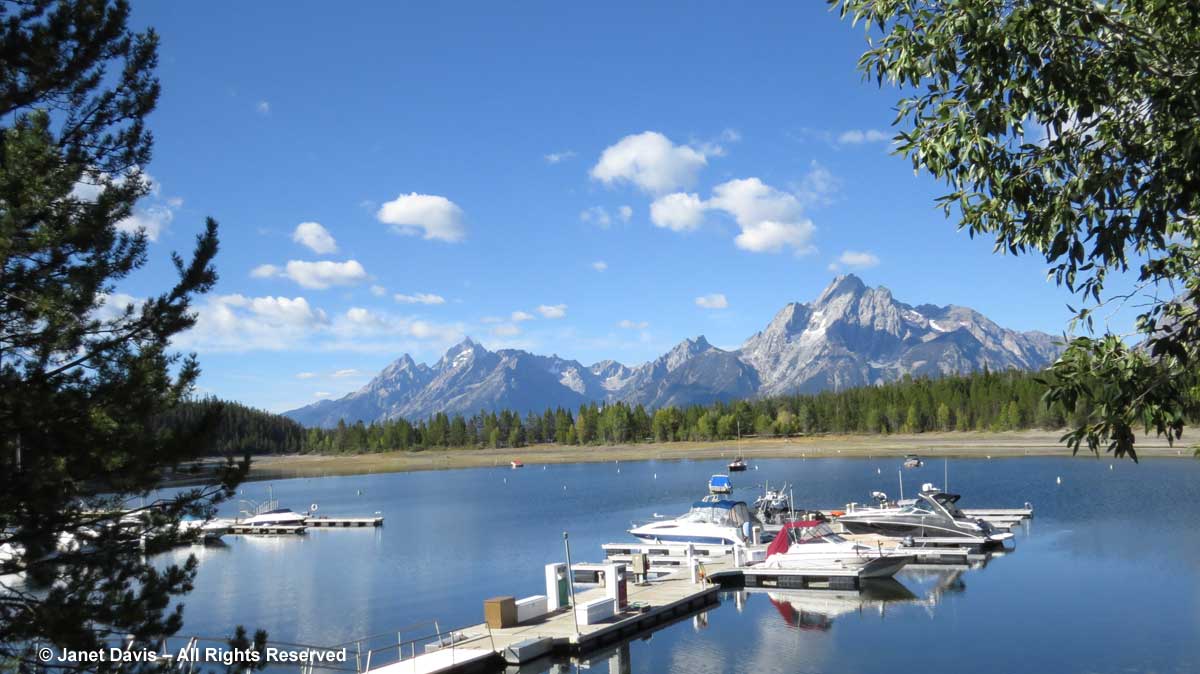
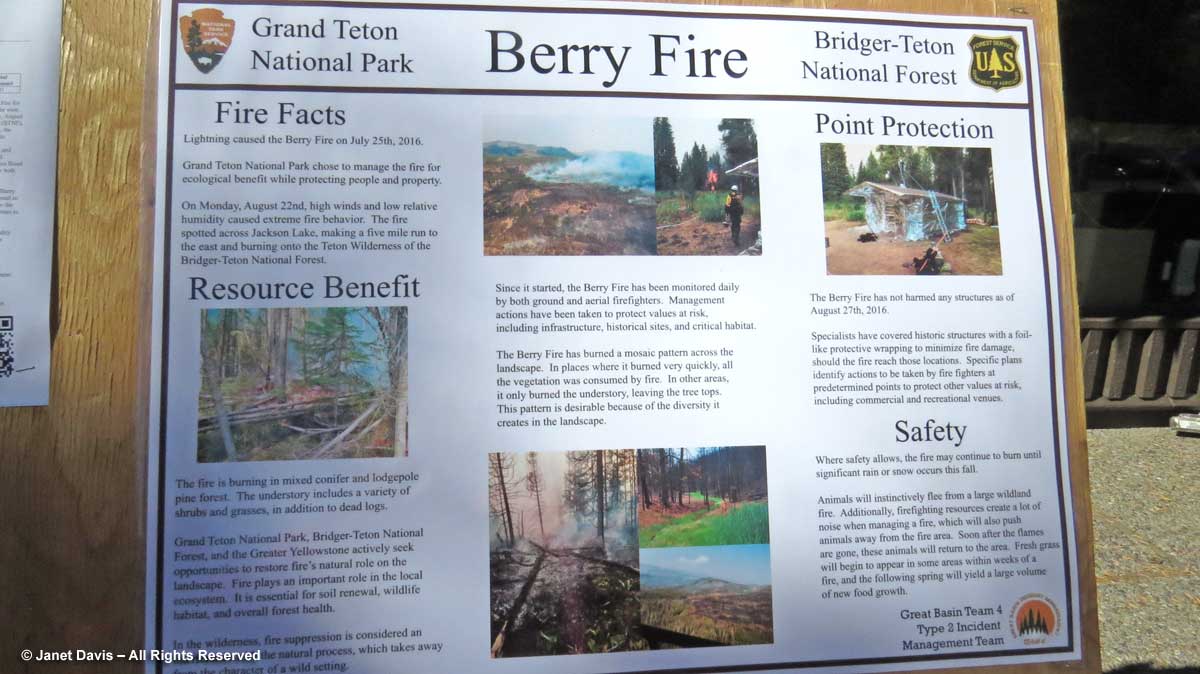
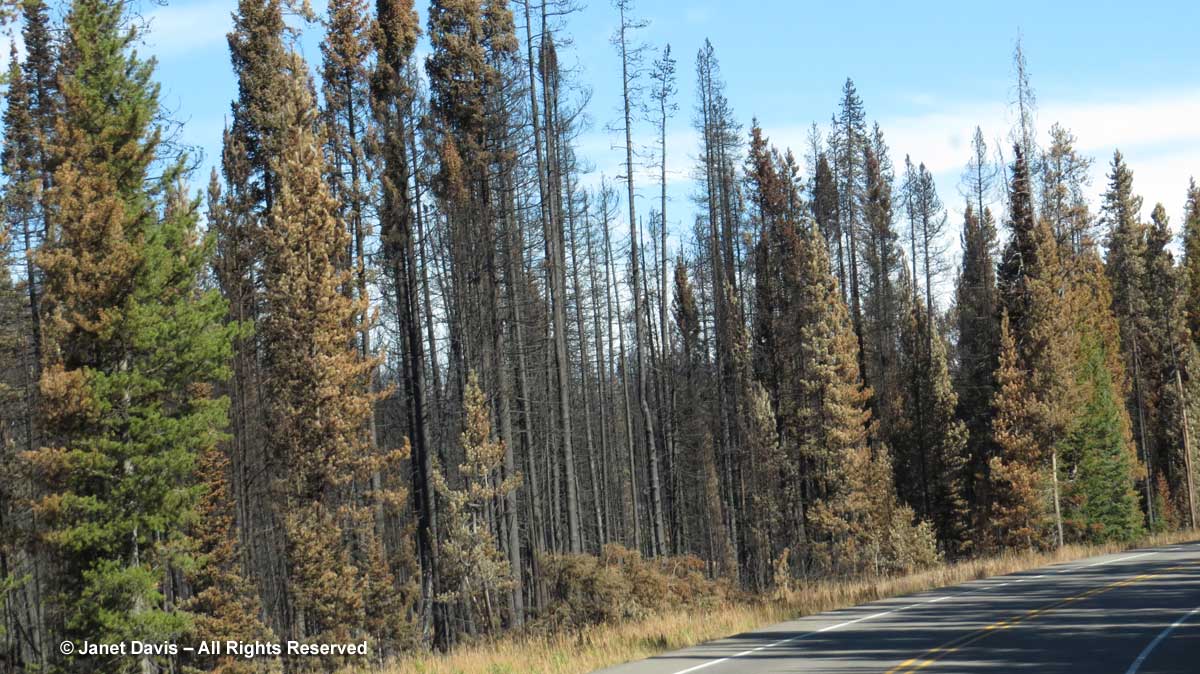
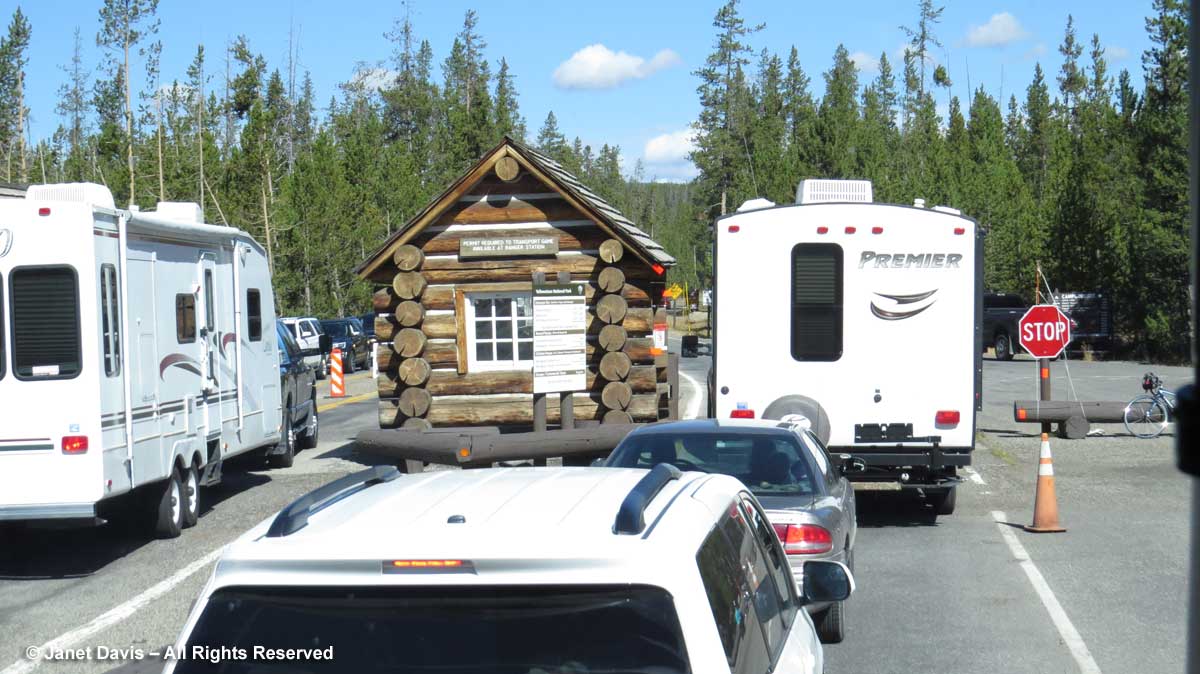
Just beautiful, Janet! And thoroughly educational.
Thank you..
James Moore
Thank you so much James. Kind of in your corner of the world, which was brand new to us! Happy you enjoyed it.
Thank you so much for thinking of us Janet! We appreciate your hard work and talent. It’s simply beautiful!
You’re most welcome, Ilene. You looked a little cold on that Snake River float, but it was such a memorable few hours.
Hi Janet,
Thanks for your blog. It reminded me of what we heard during the tour and learned more info that you have added. Your blog will allow me to continue enjoying the memories of our trip.
Amelia
Thanks, Amelia. It’s always fun for me to ‘research’ where we’ve been. I do learn a lot more after I get home.
Congratulations! The pictures are awesome! You just blogged a perfect diary of our most enjoyable and educational trip. What a talent! Looking forward to your next blog.
Best regards .
Thanks so much Norma! Will let you know when the next one is up. Cheers.